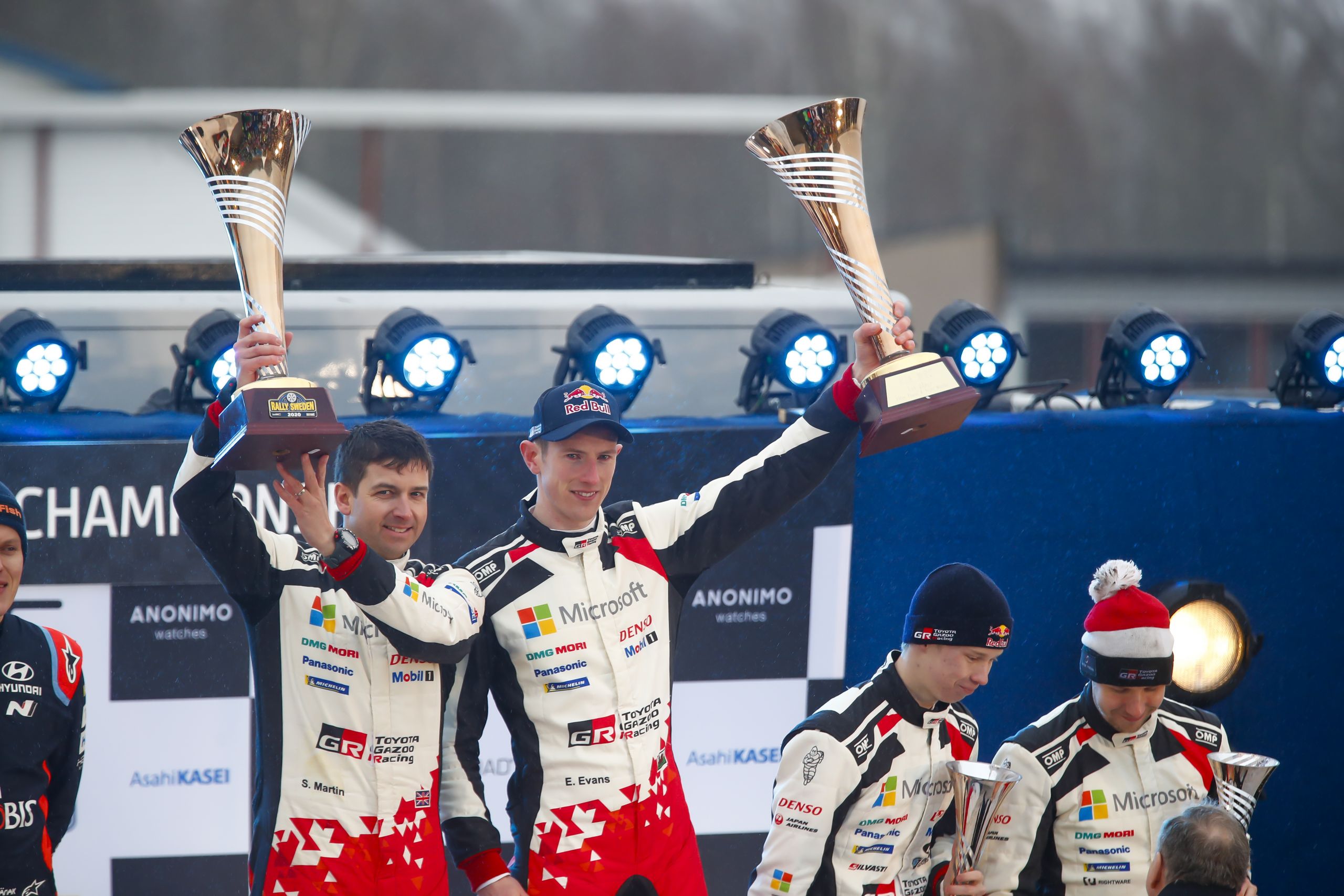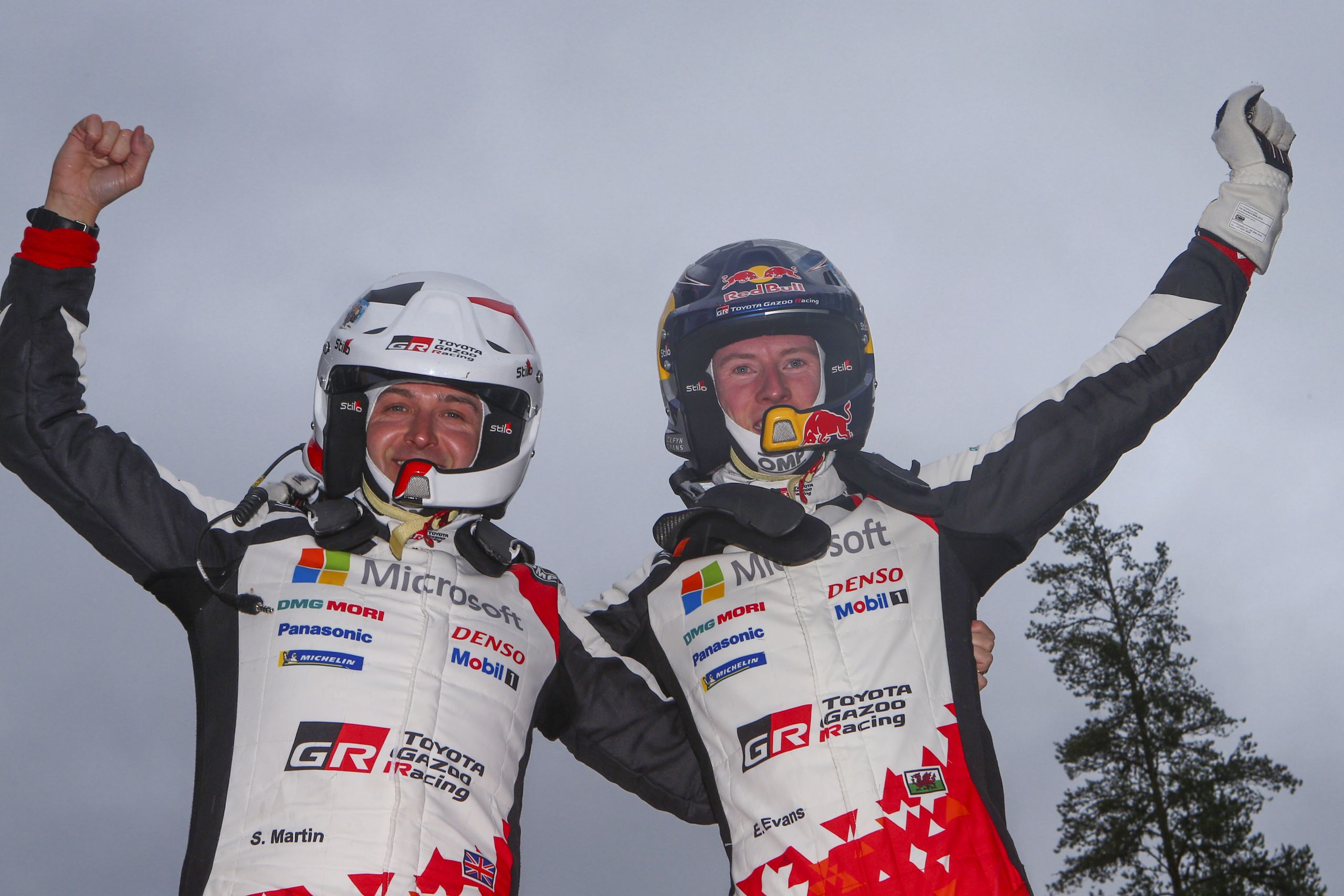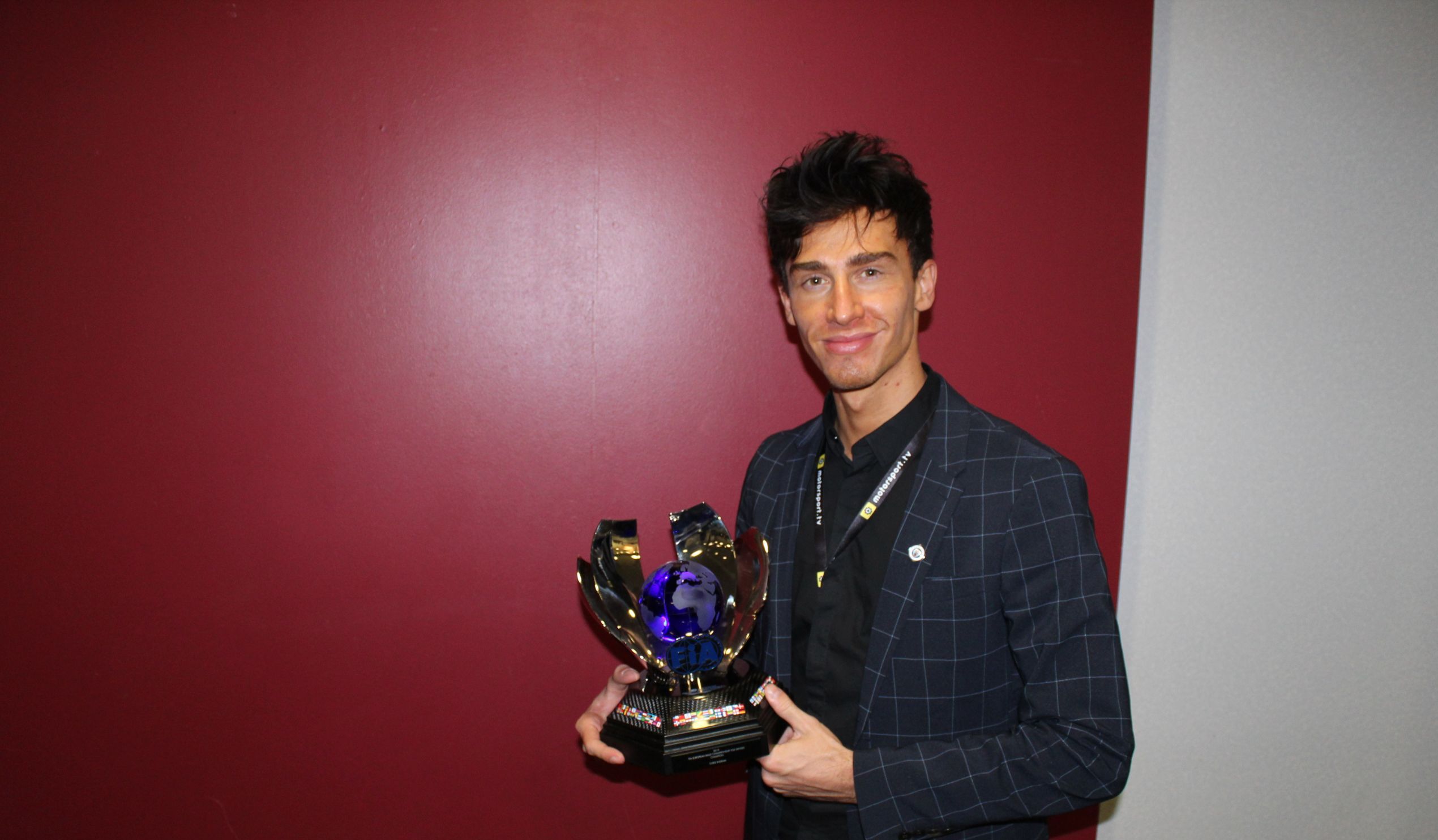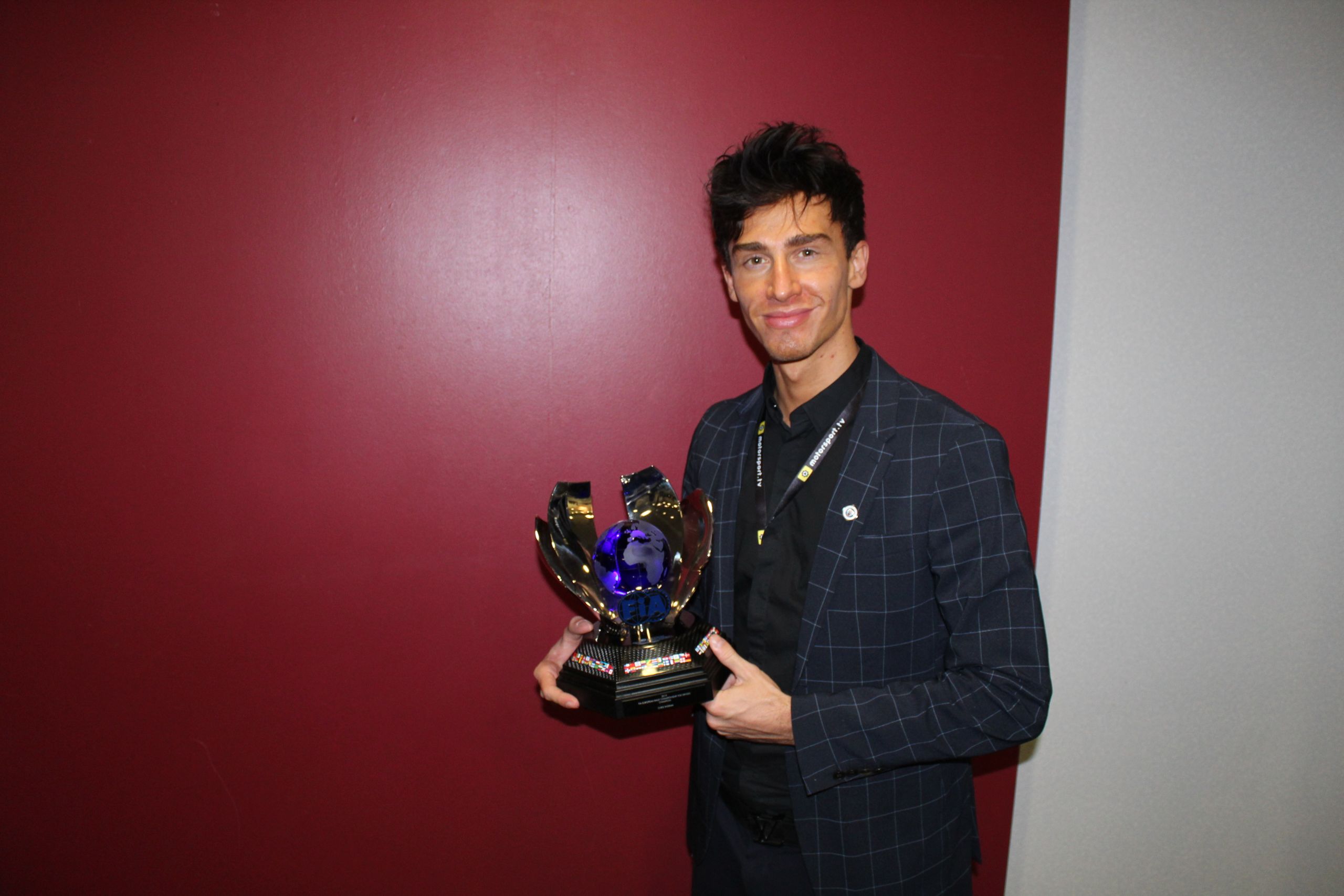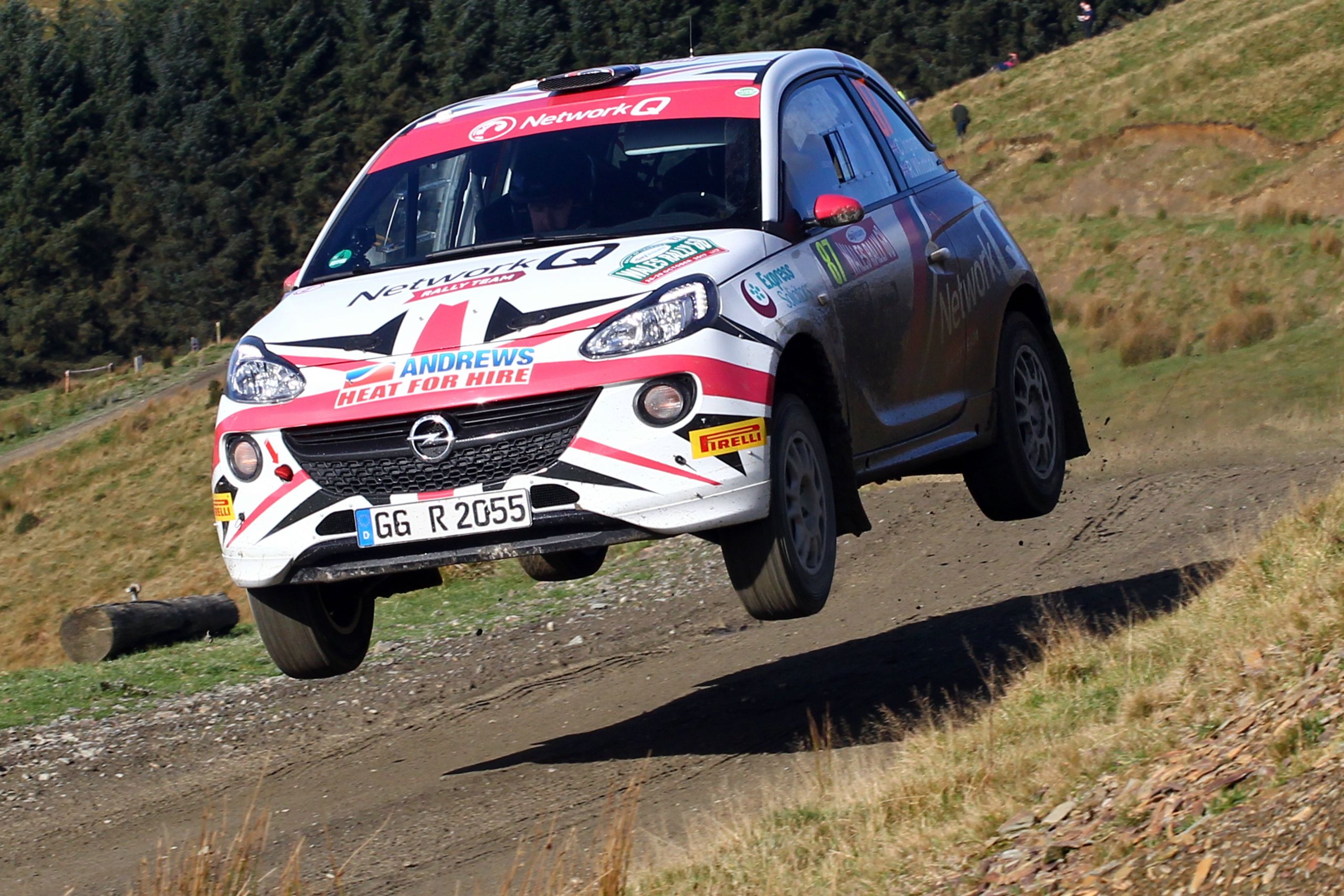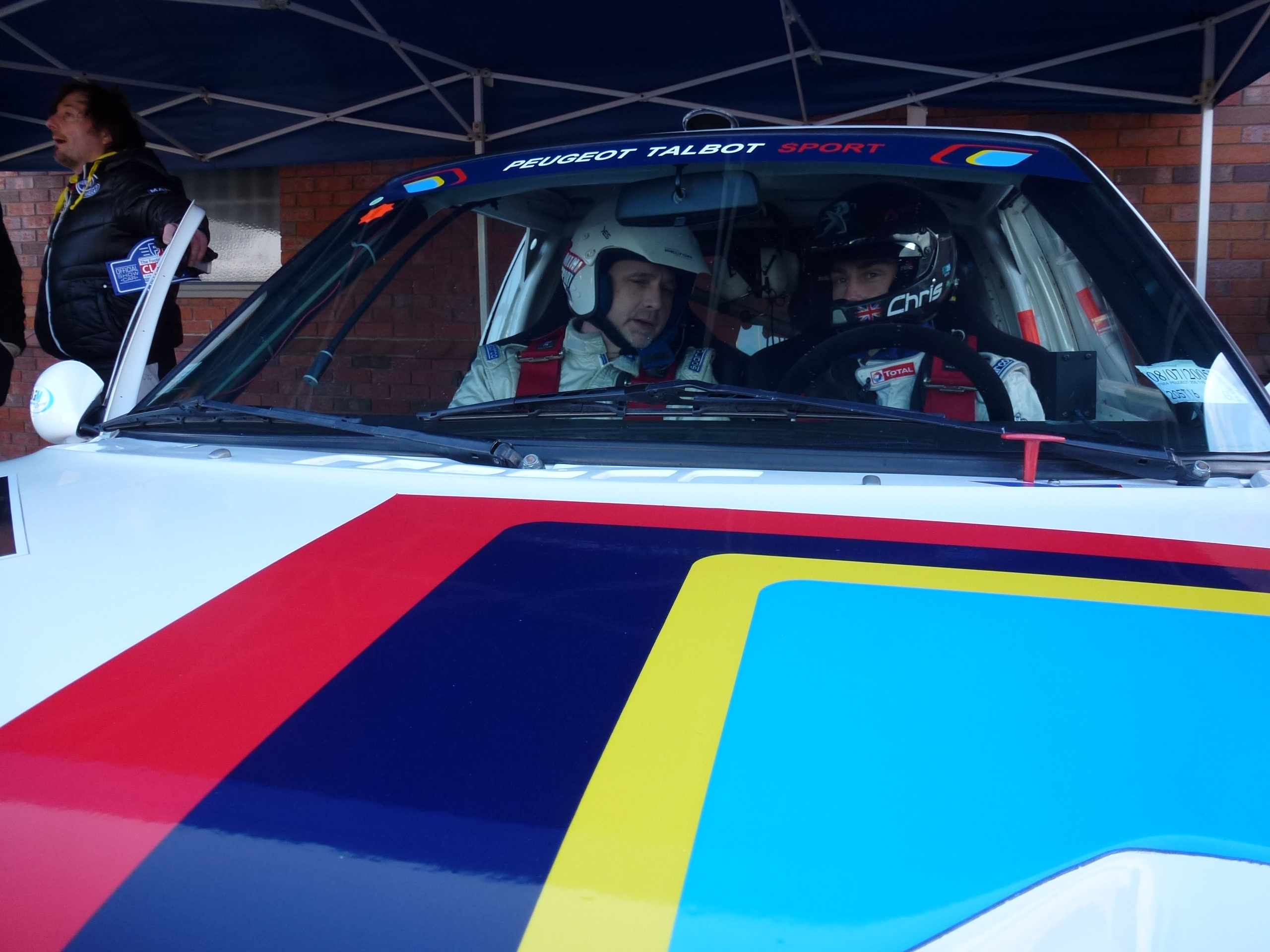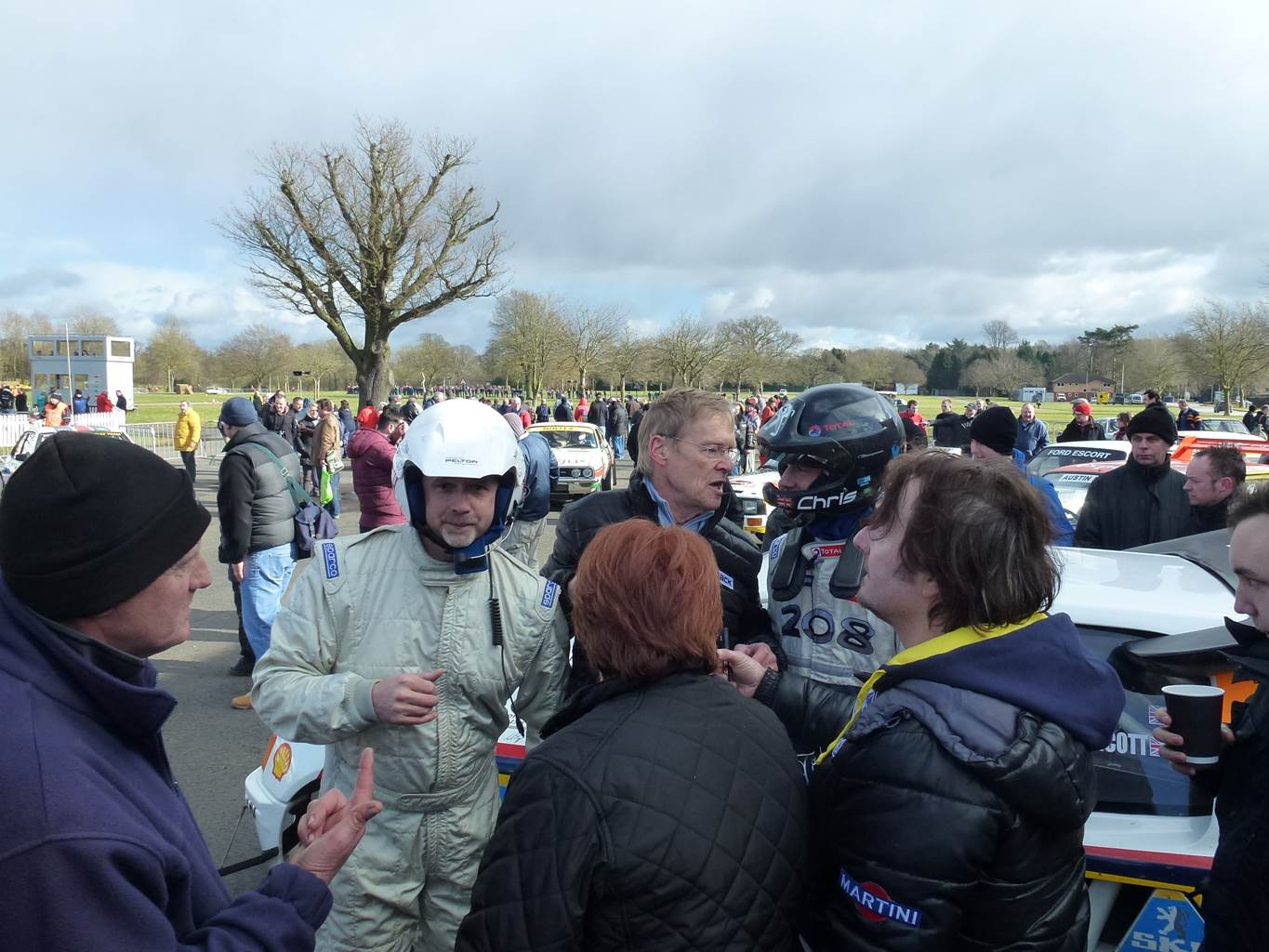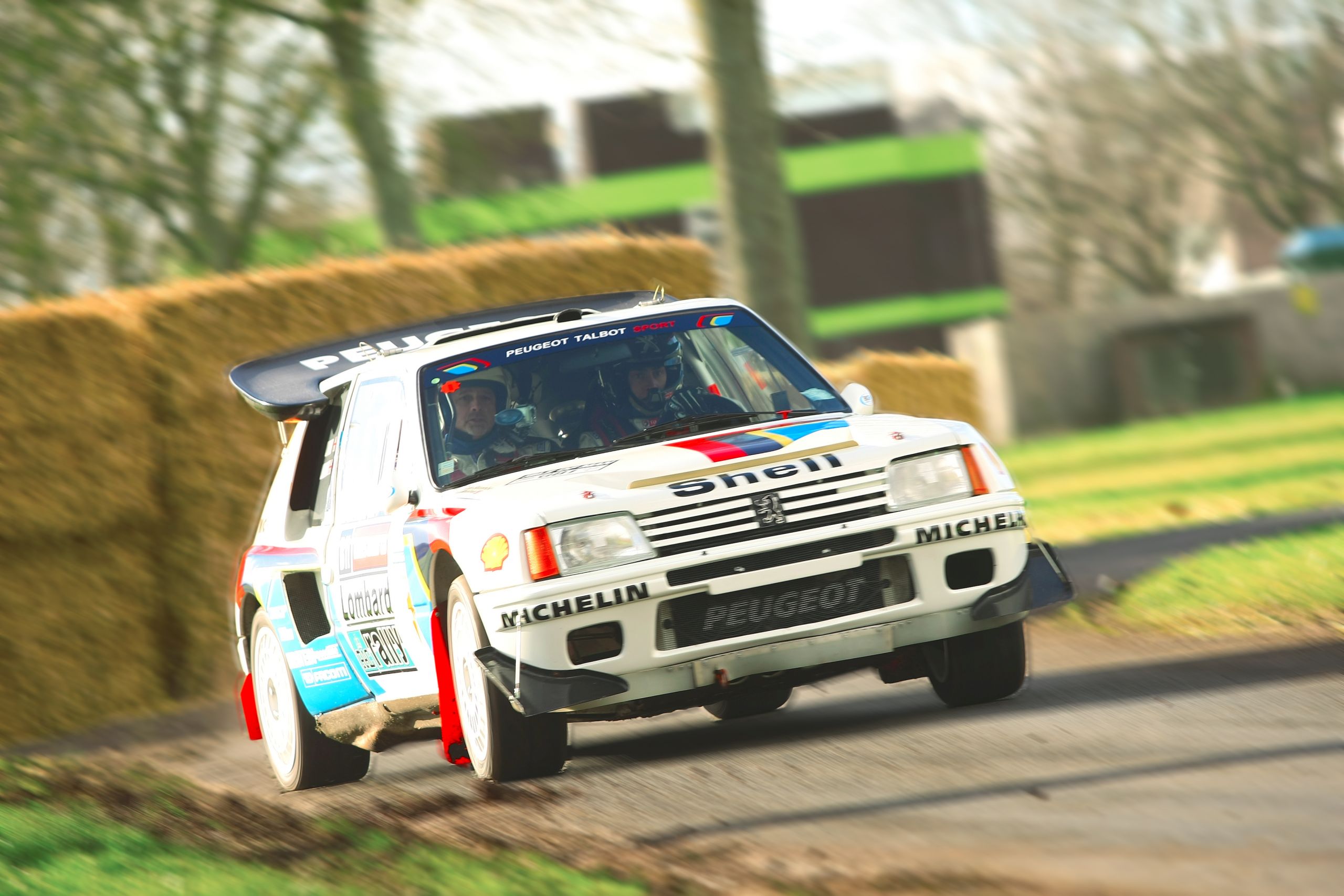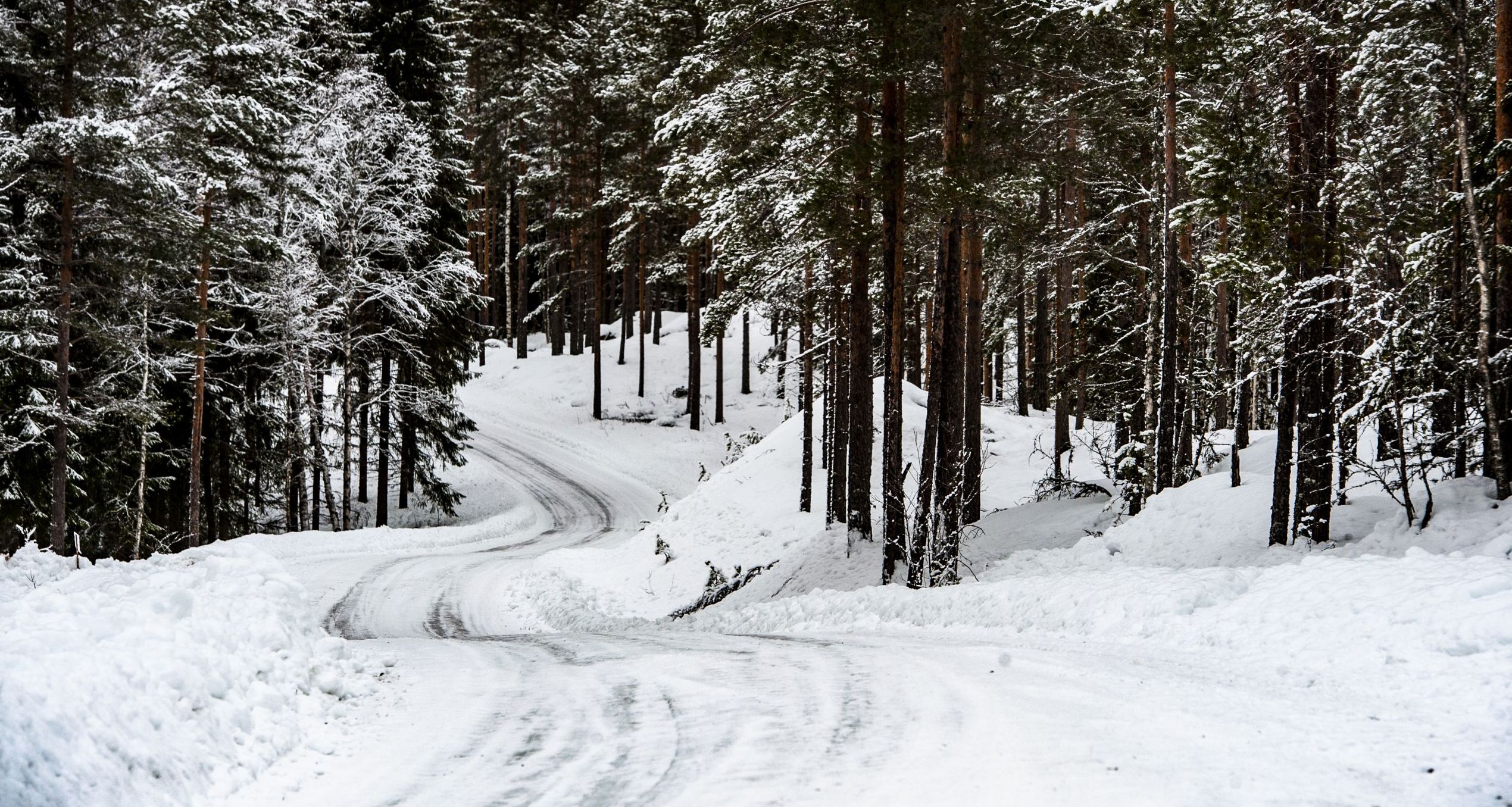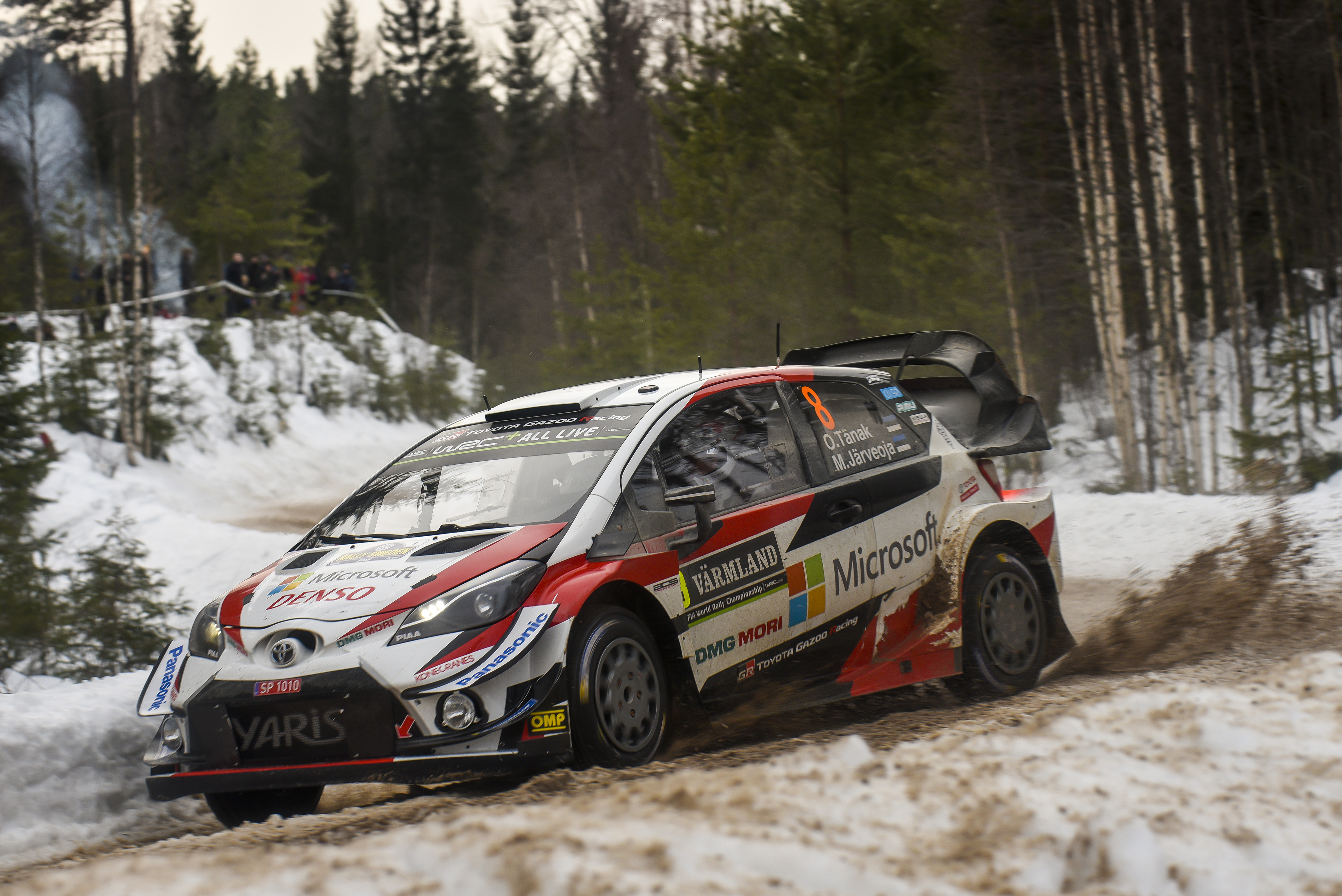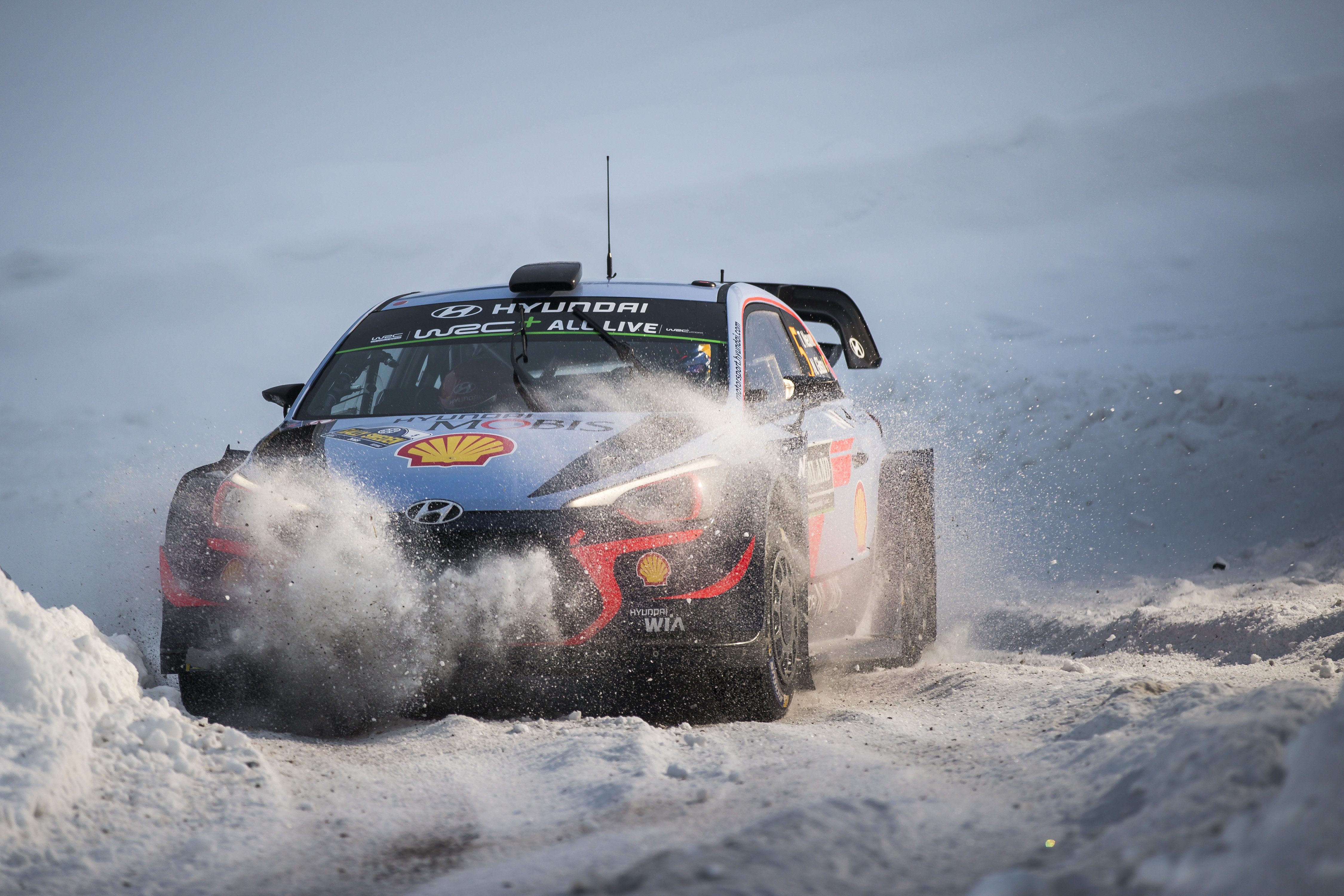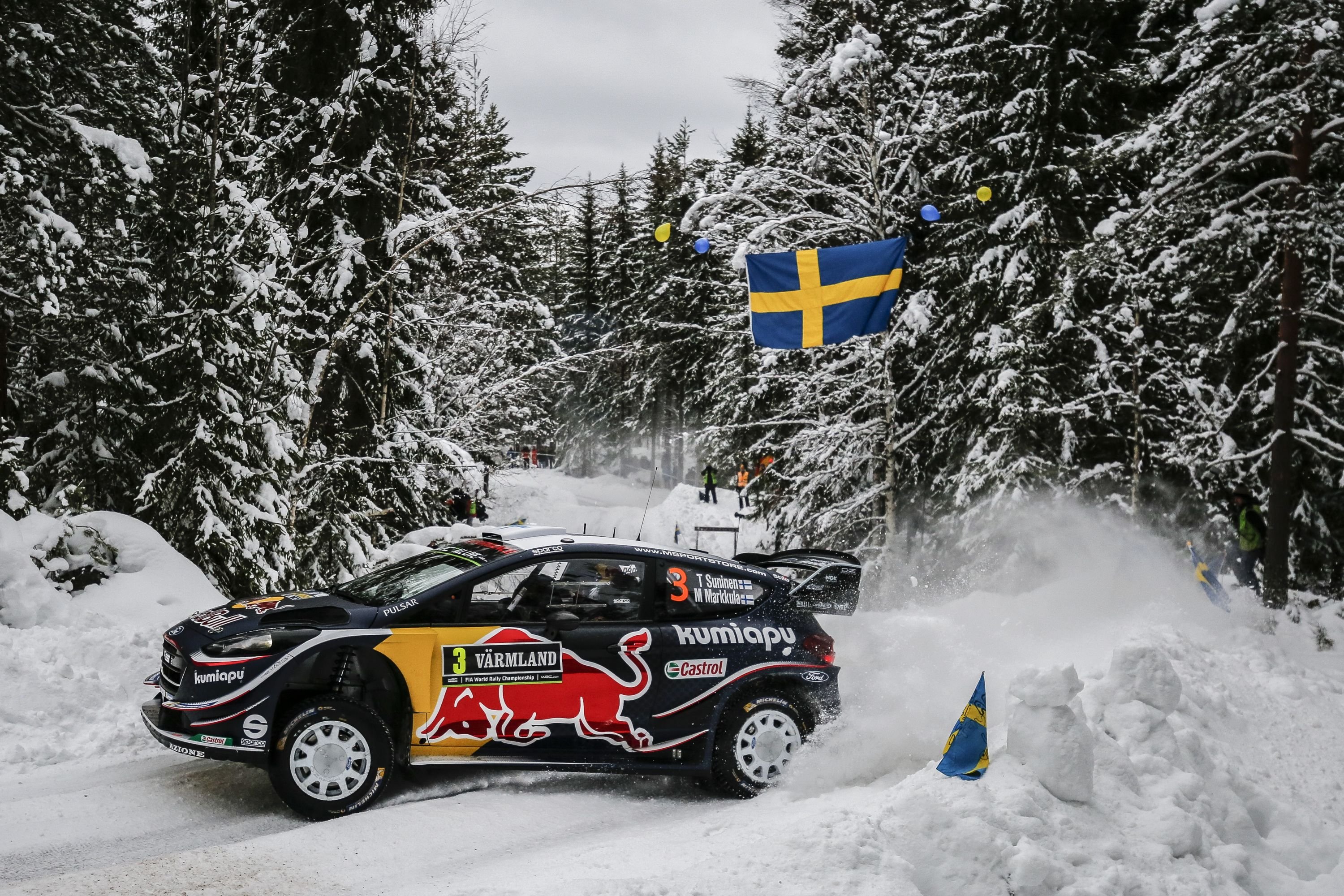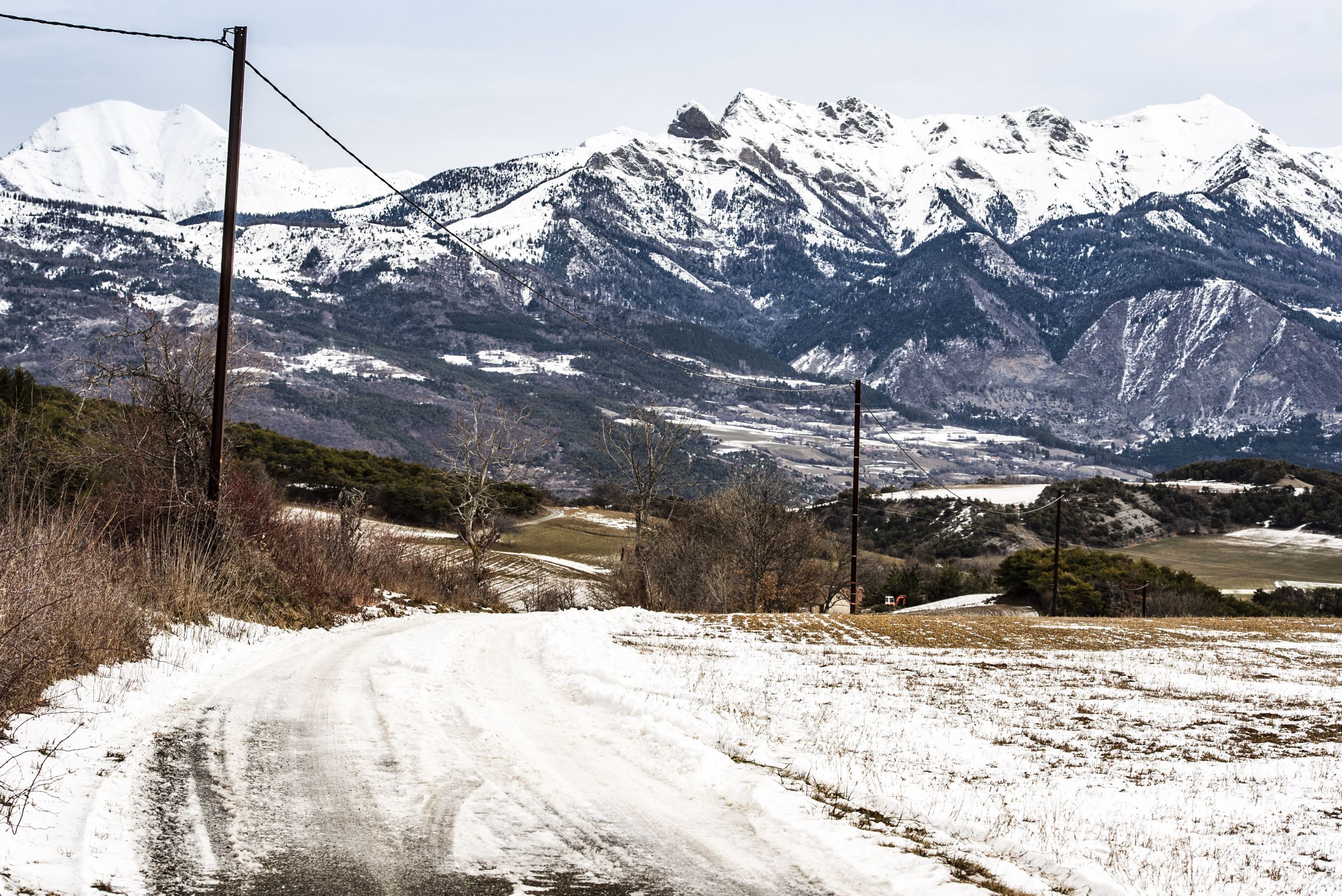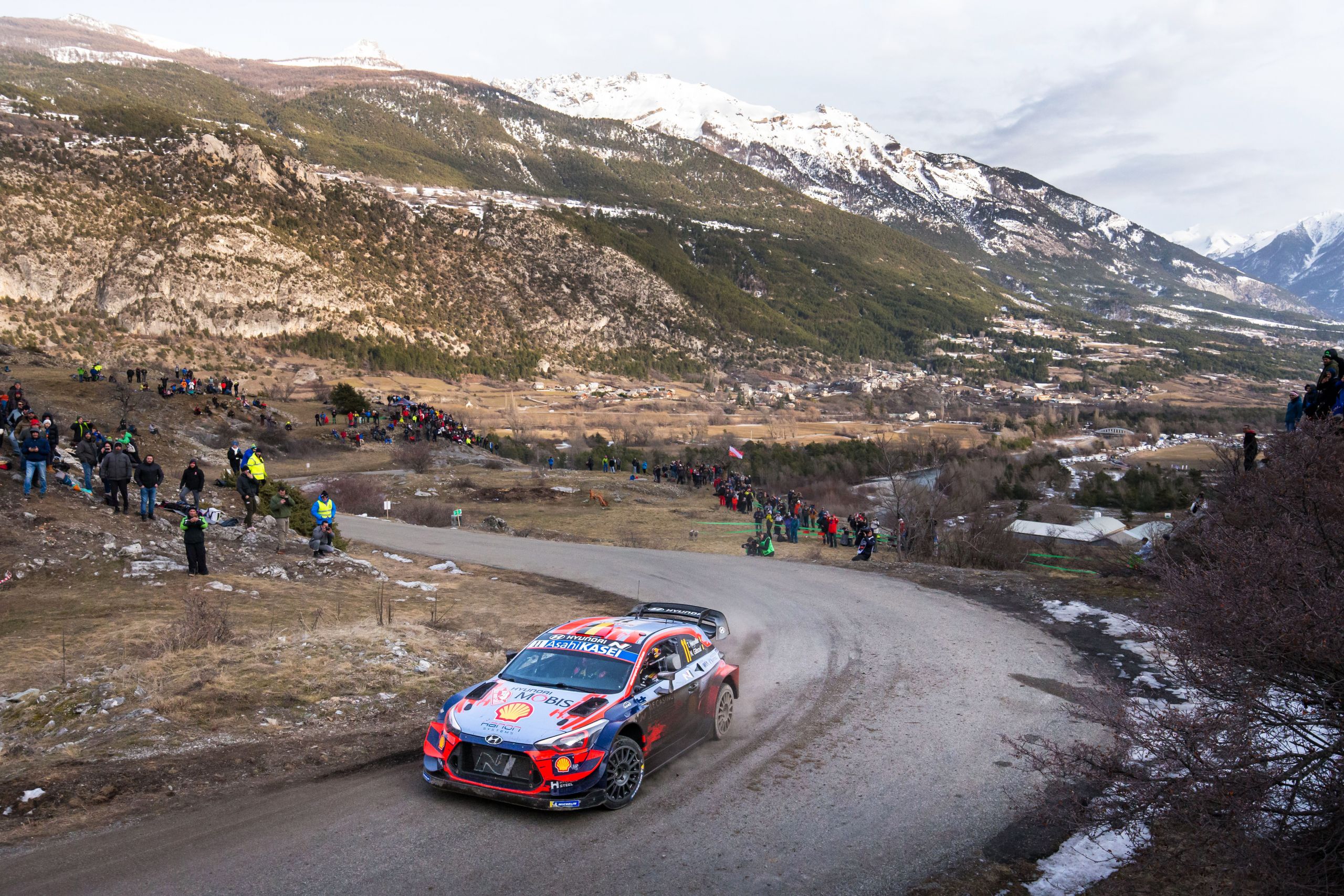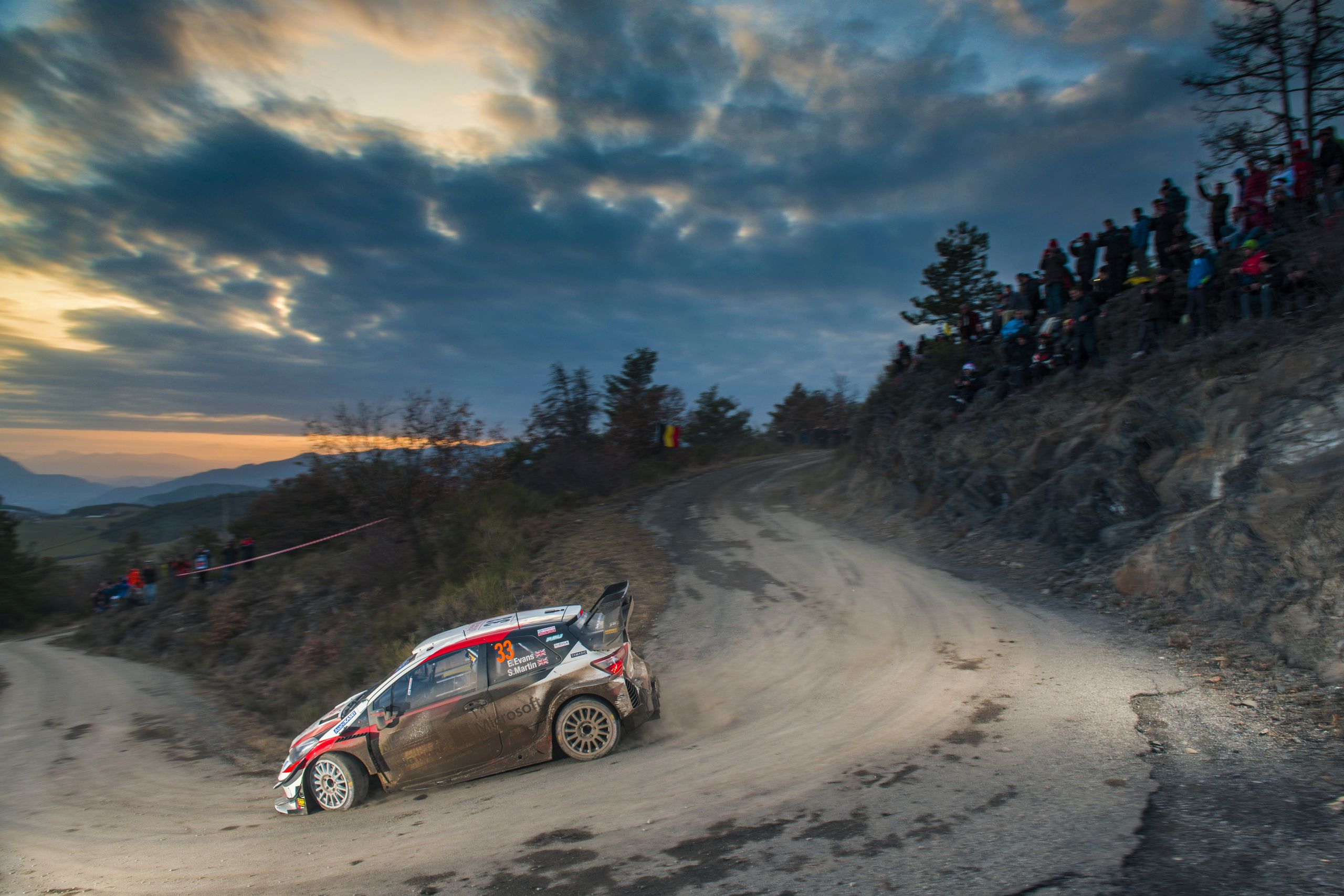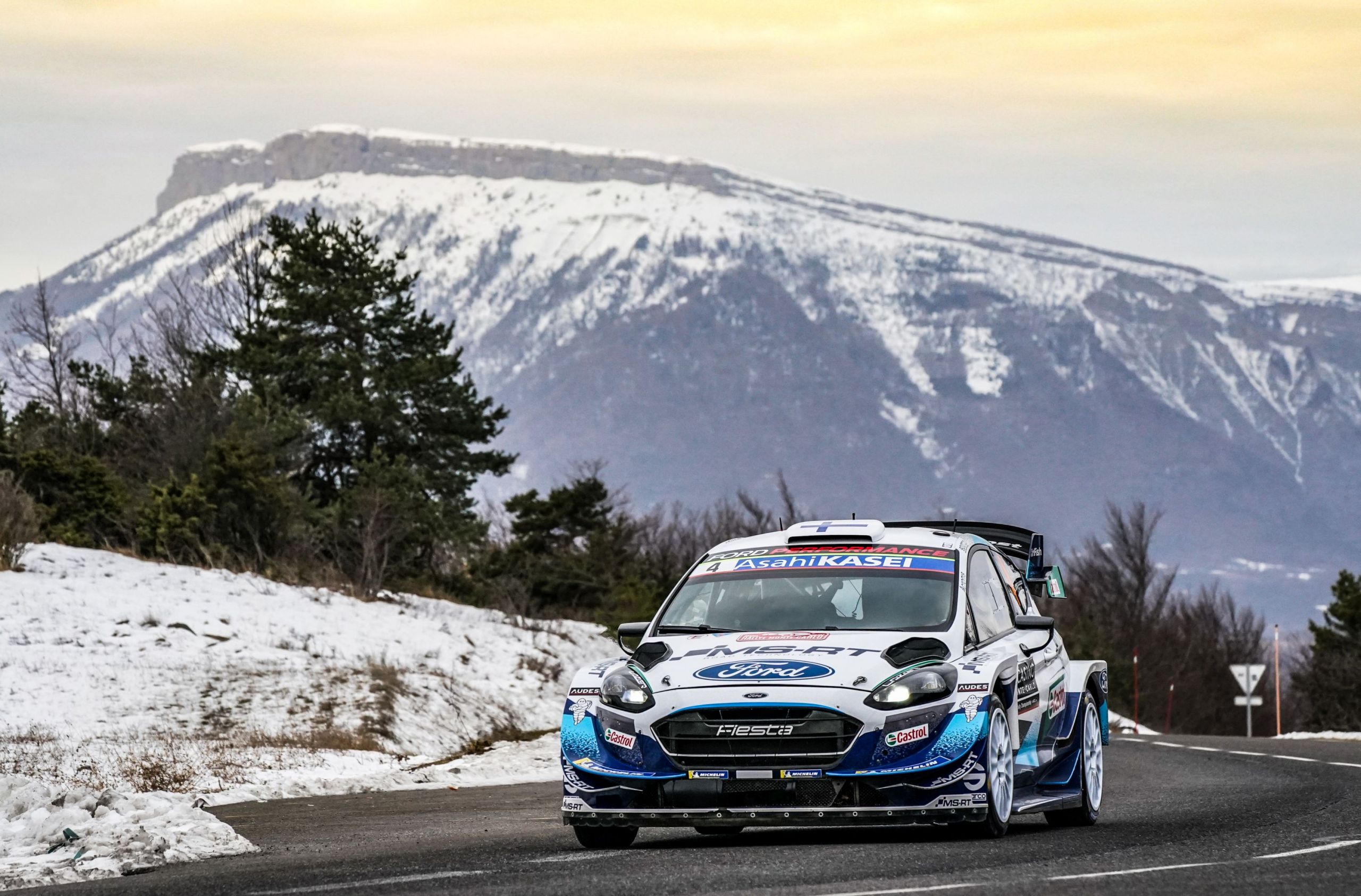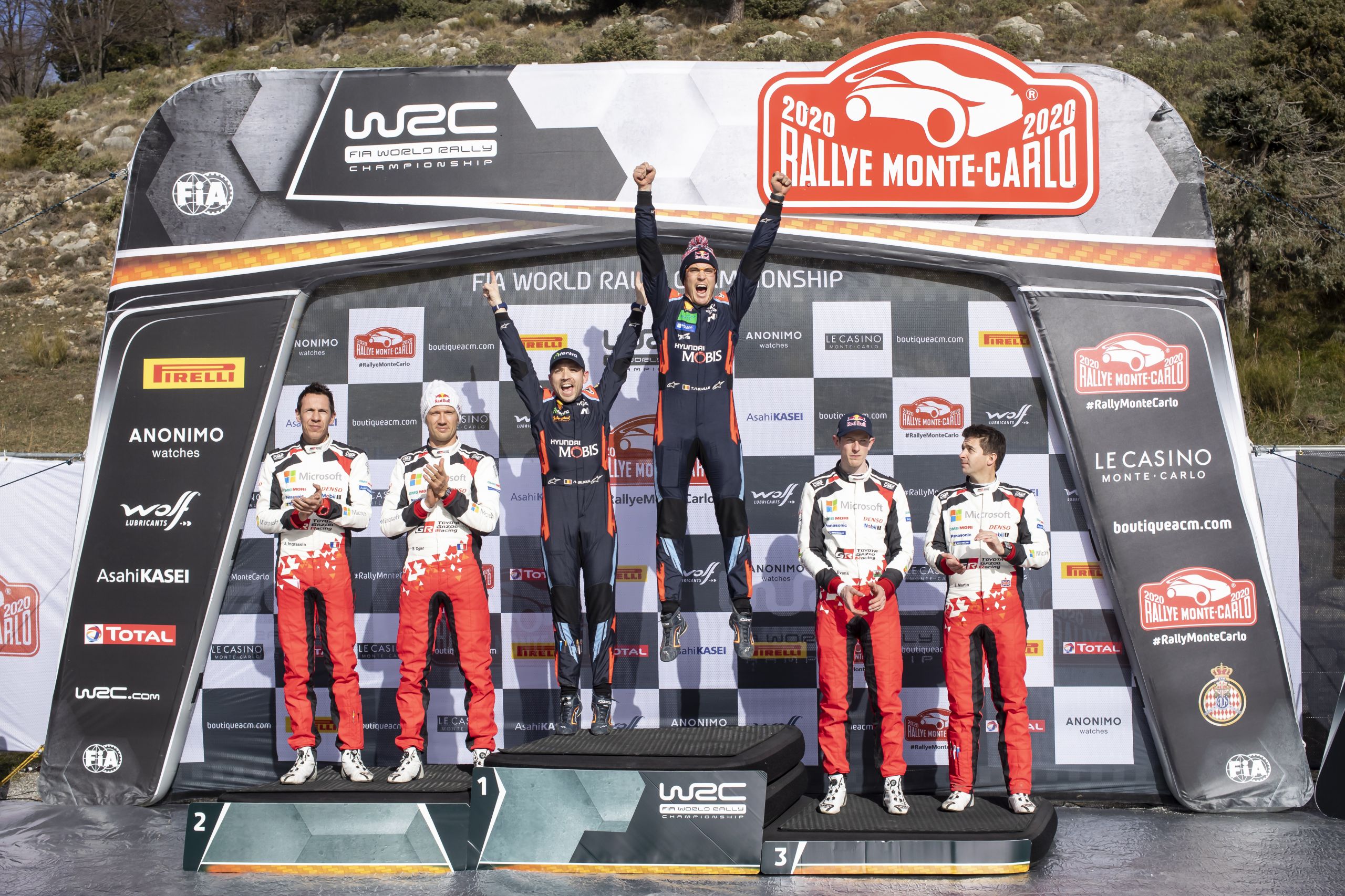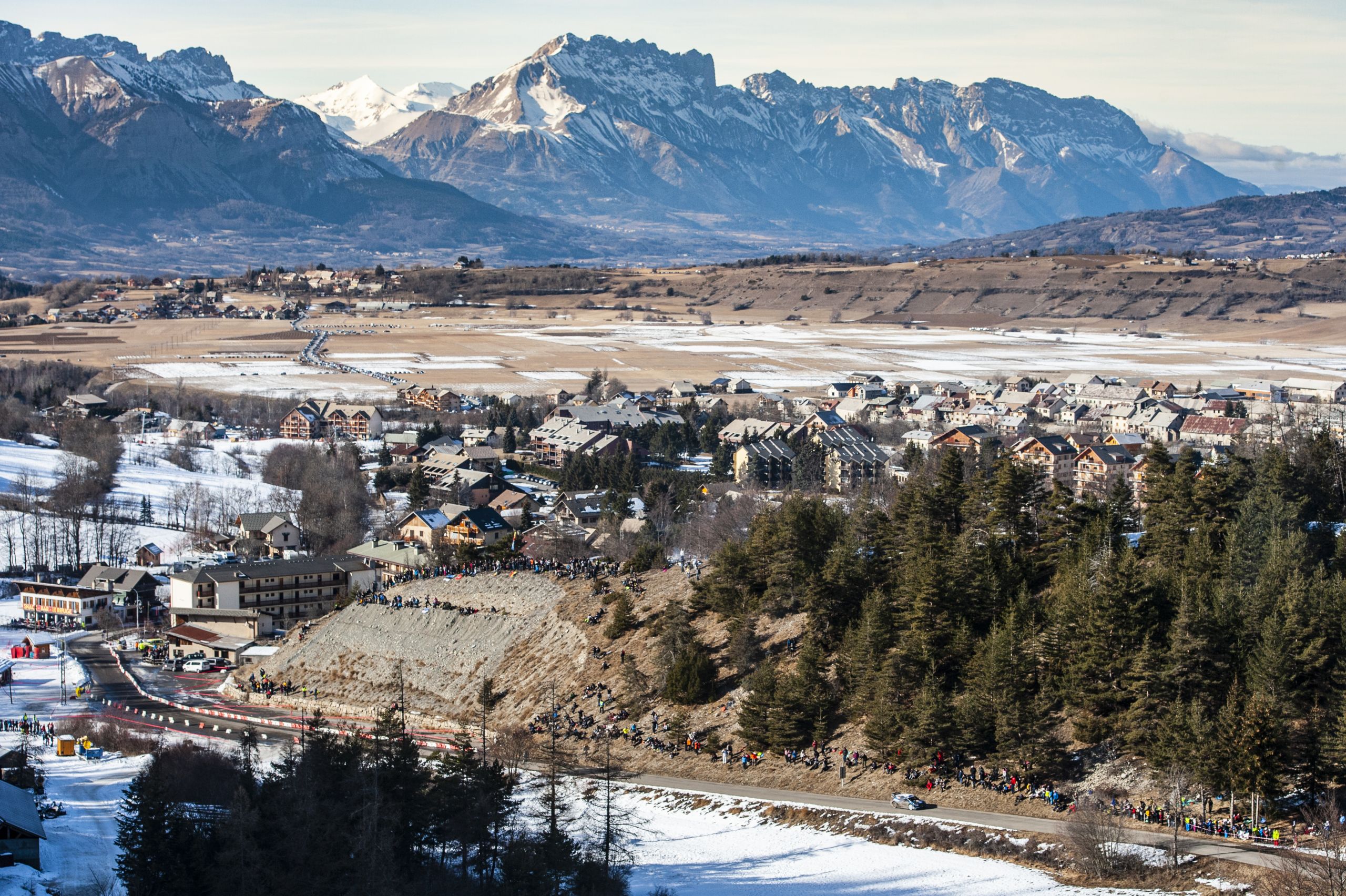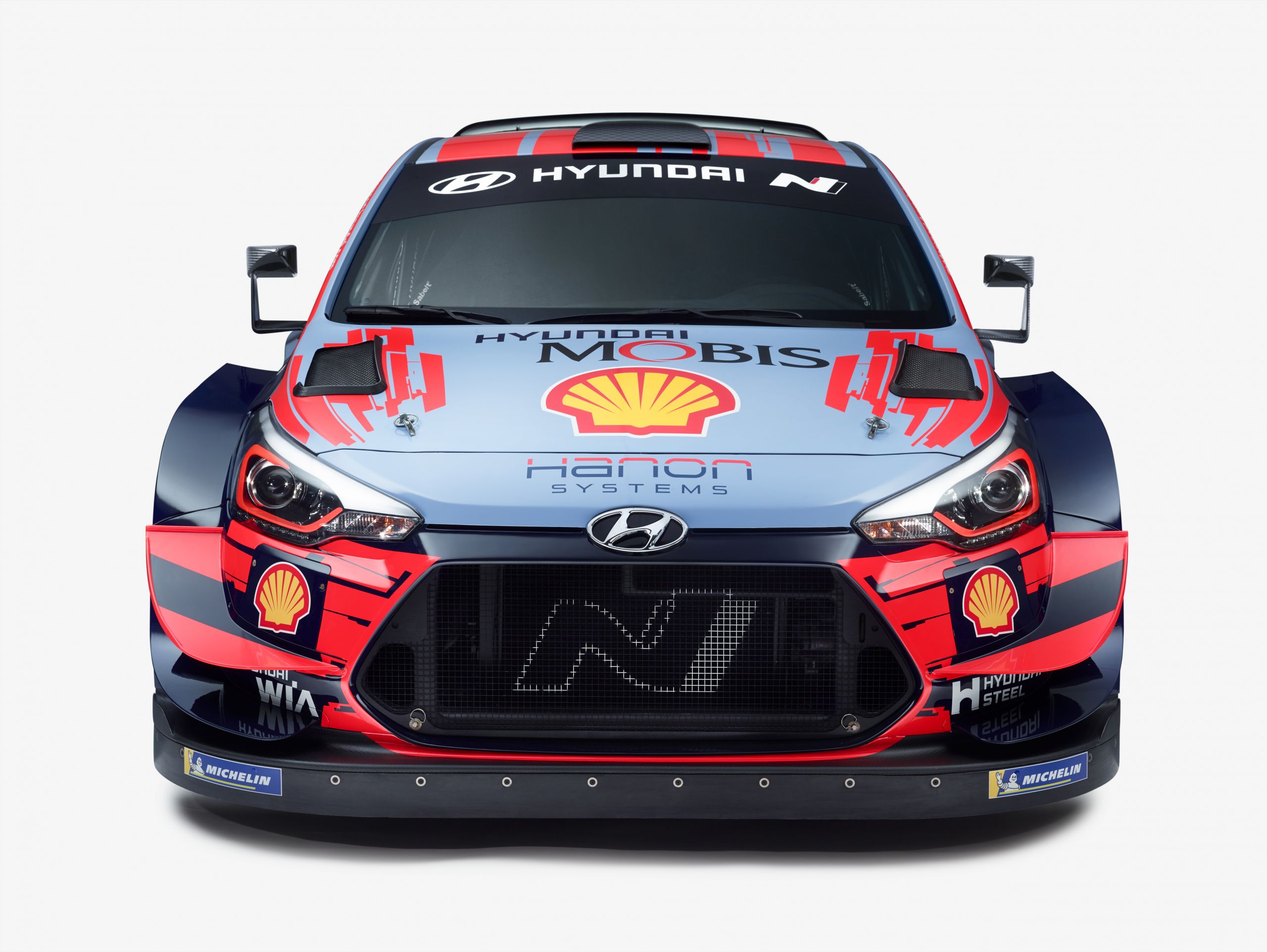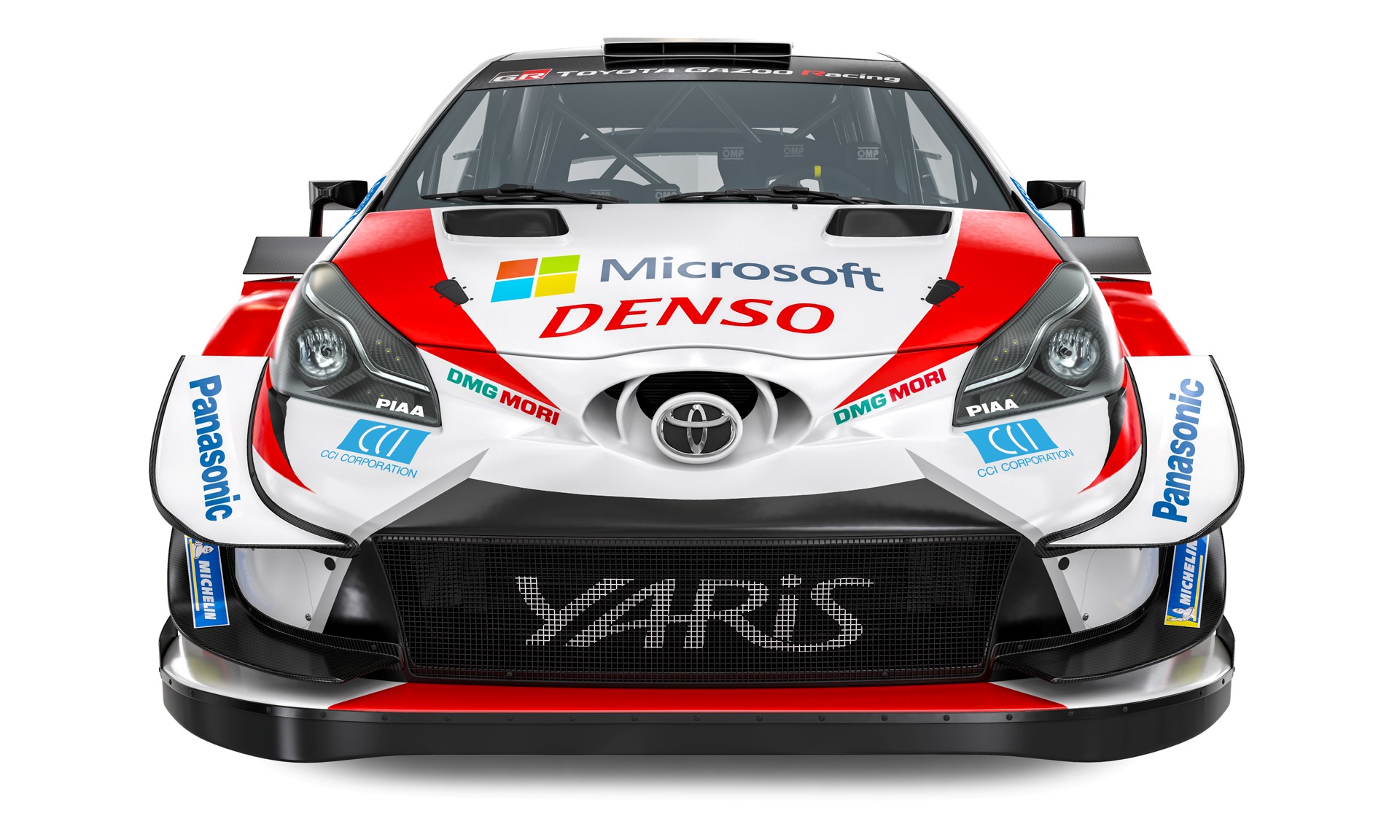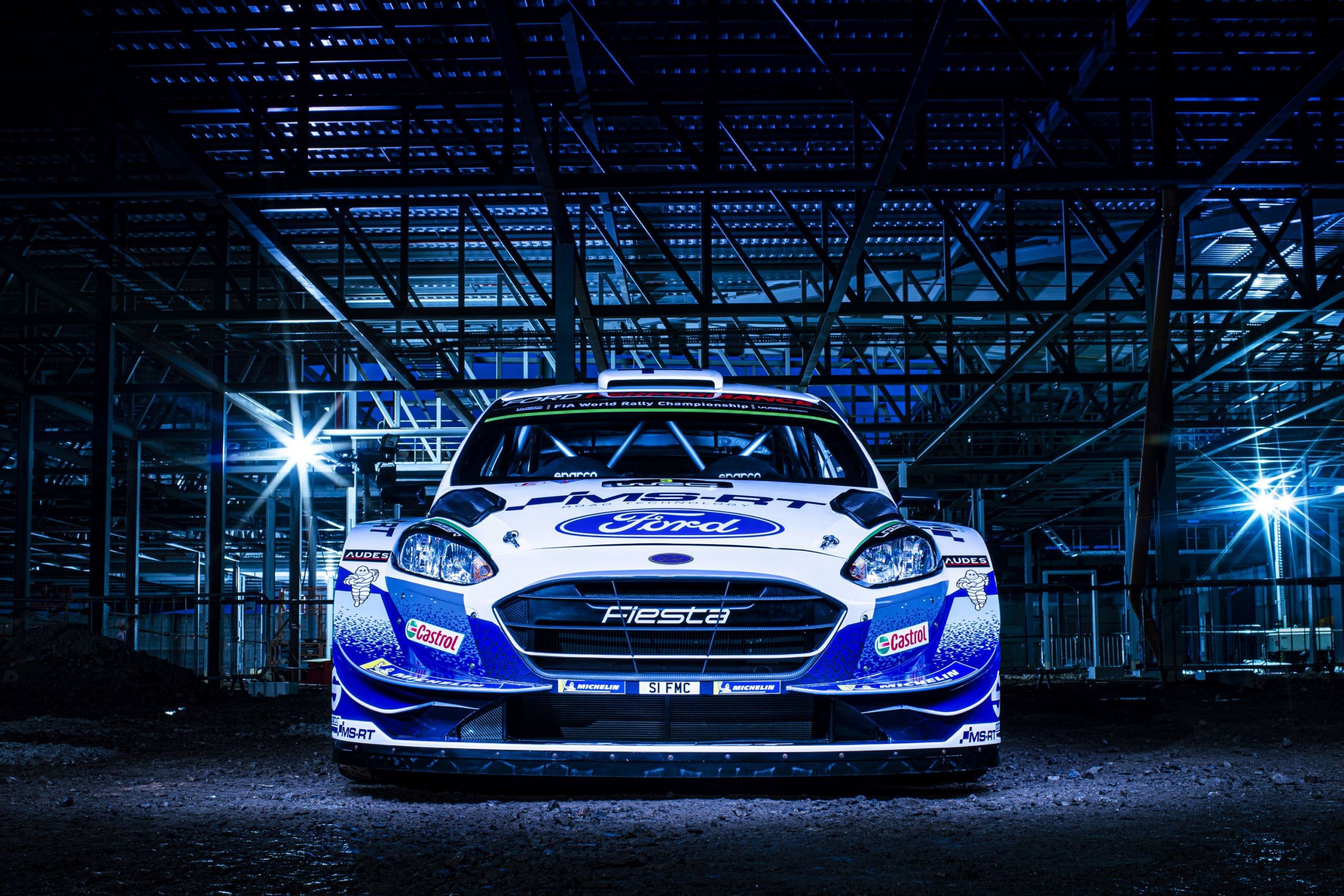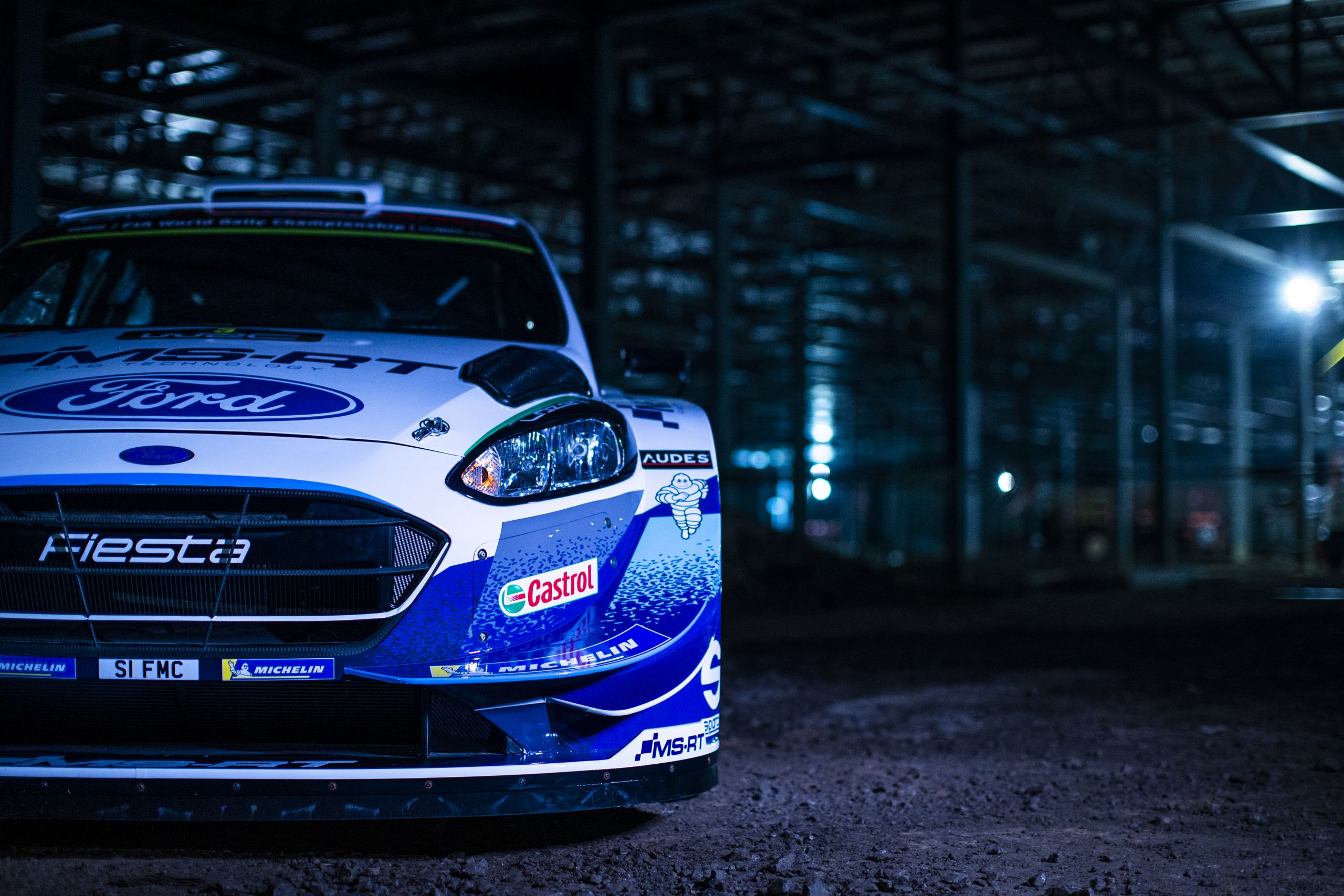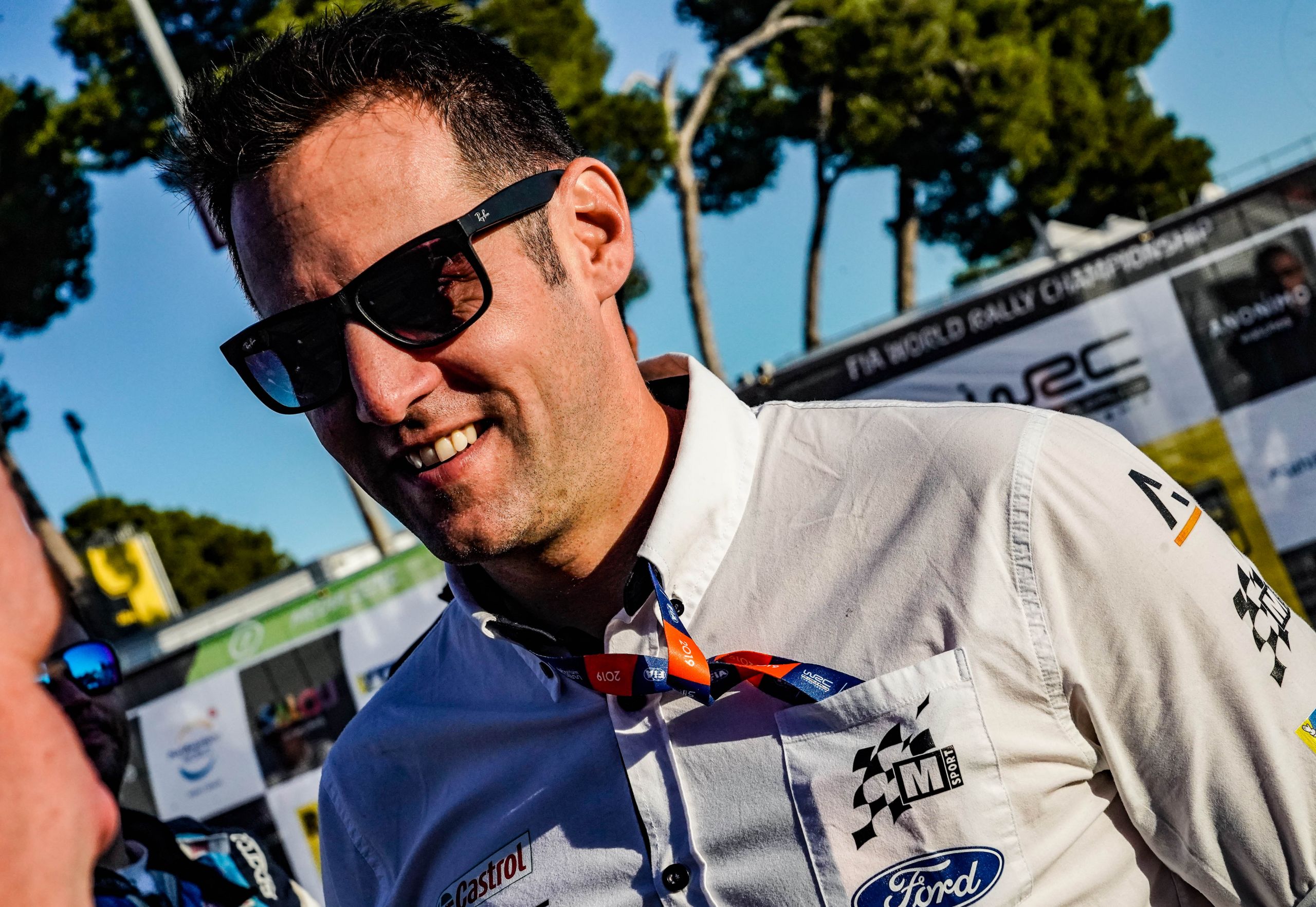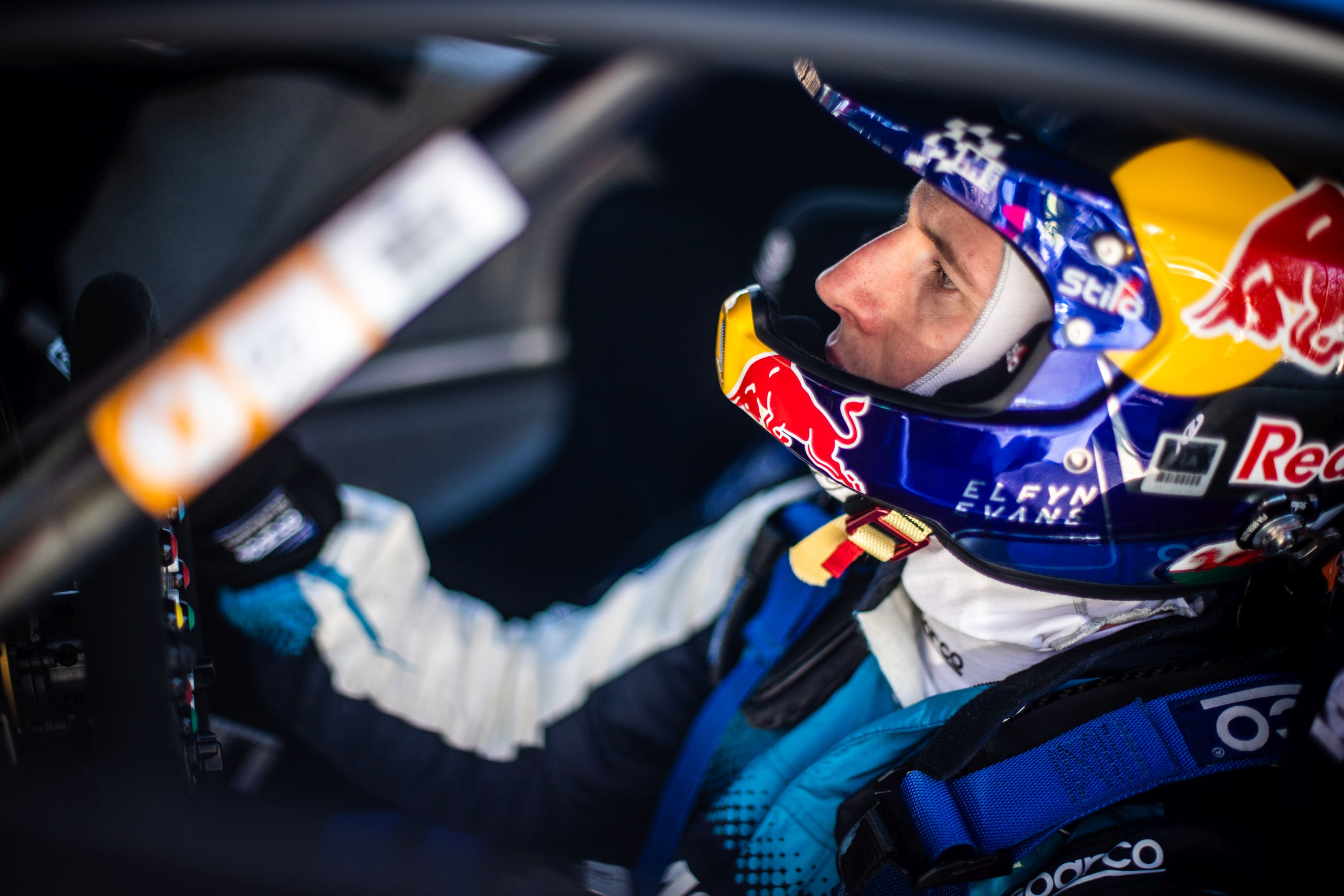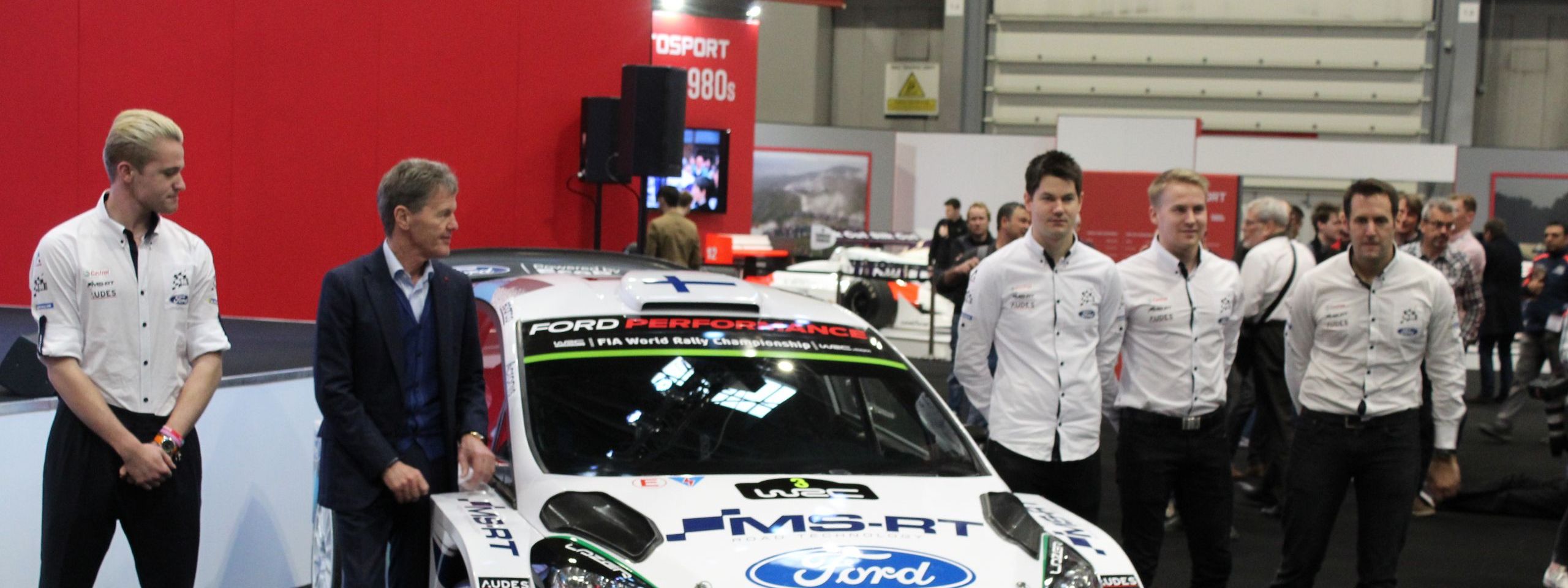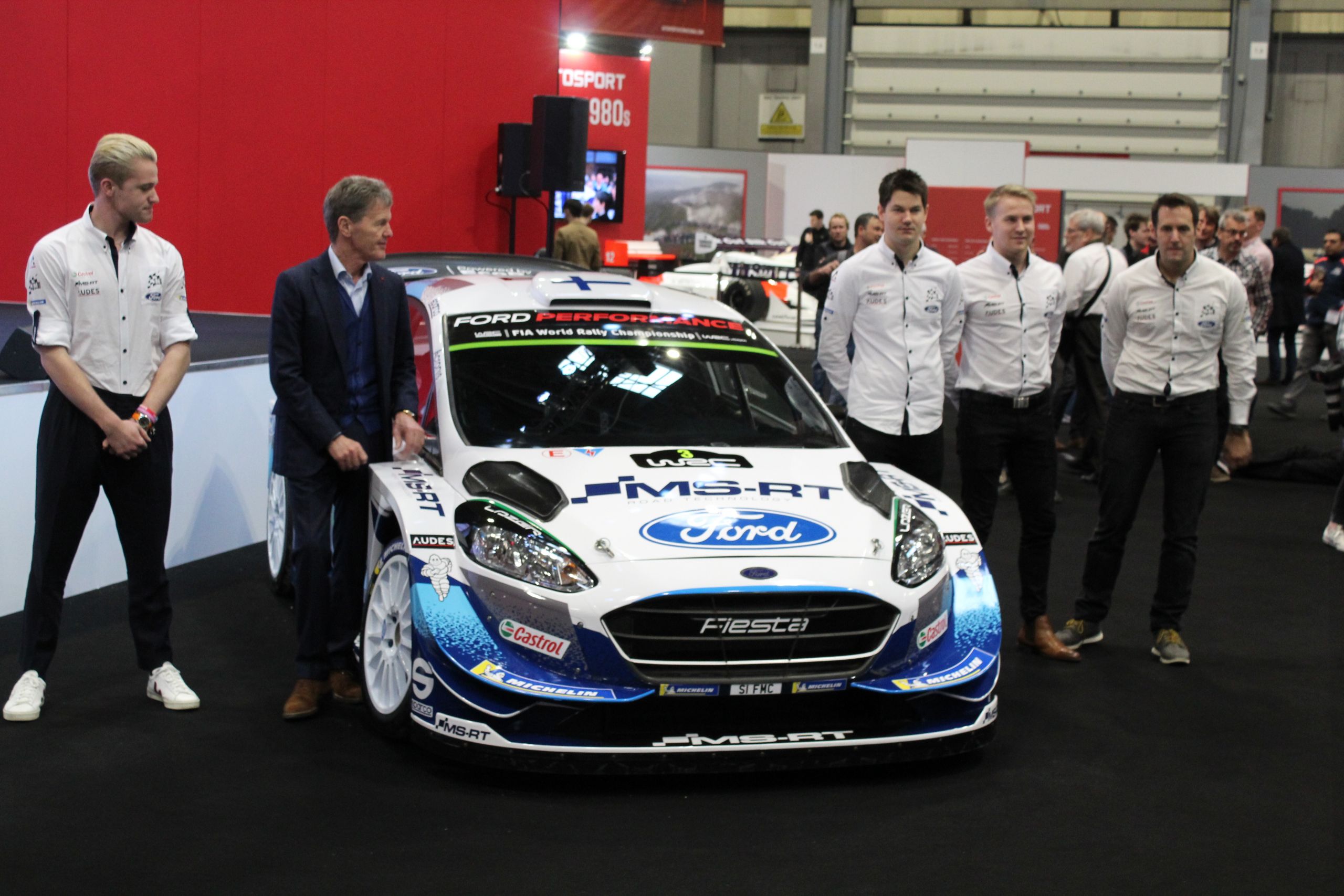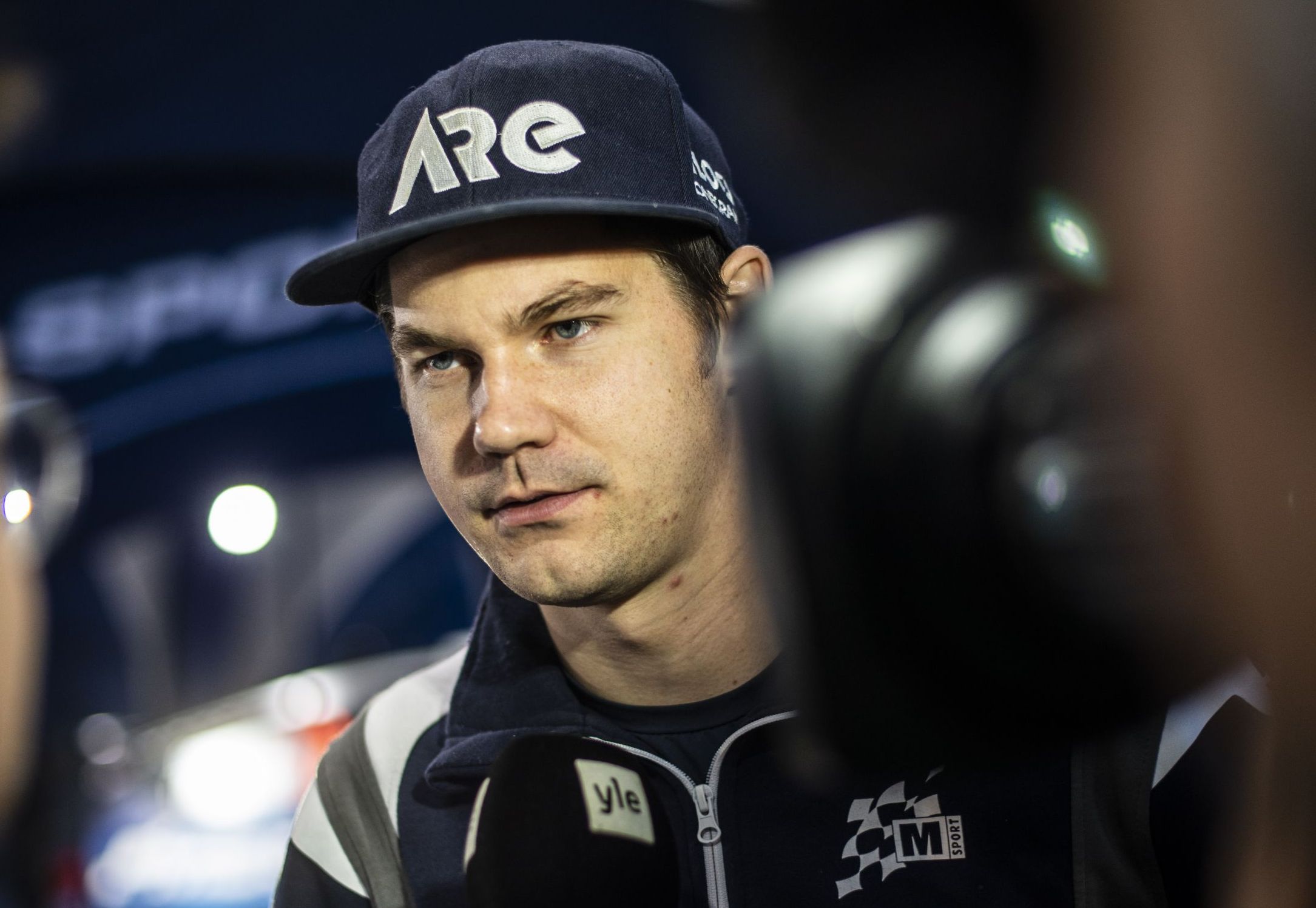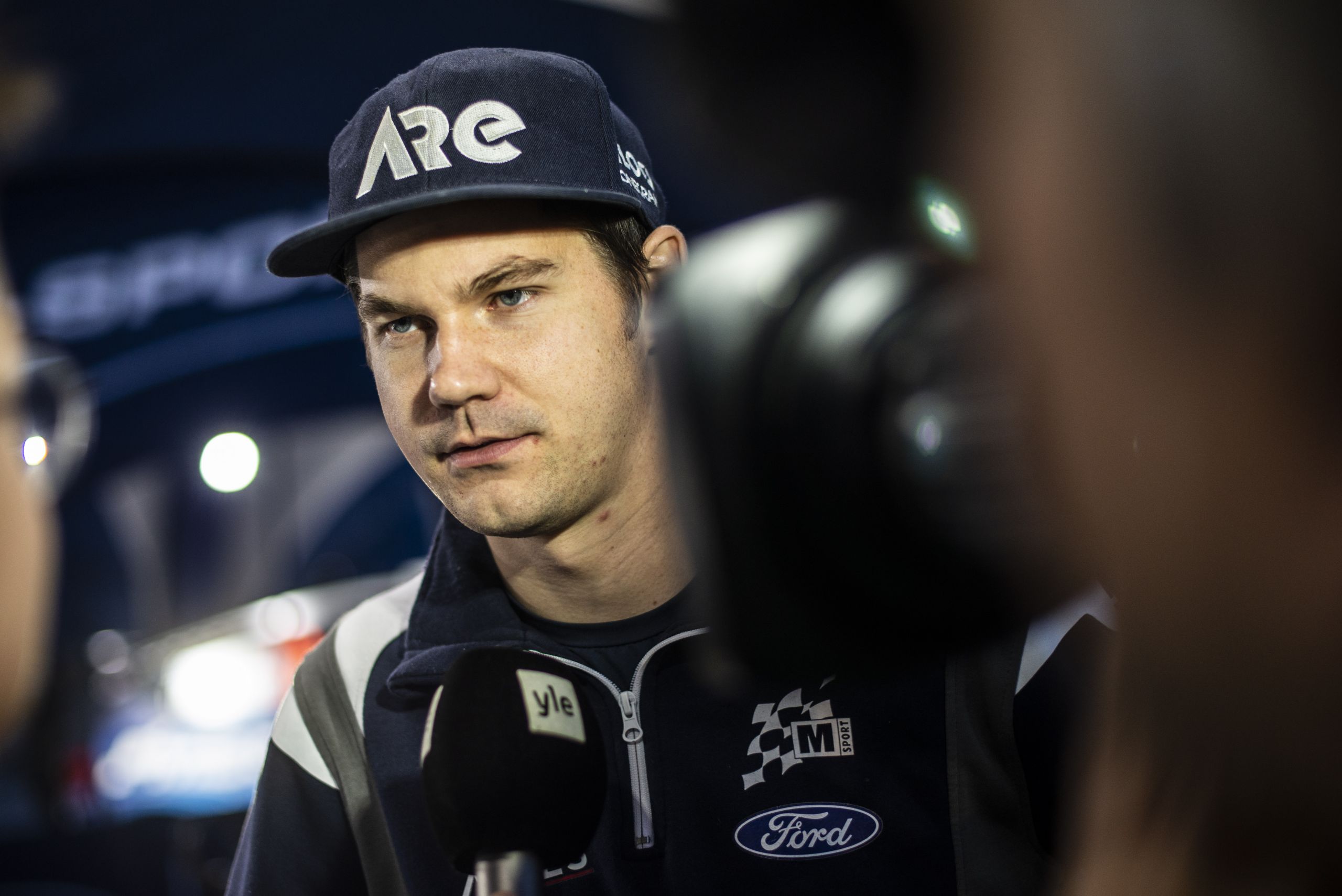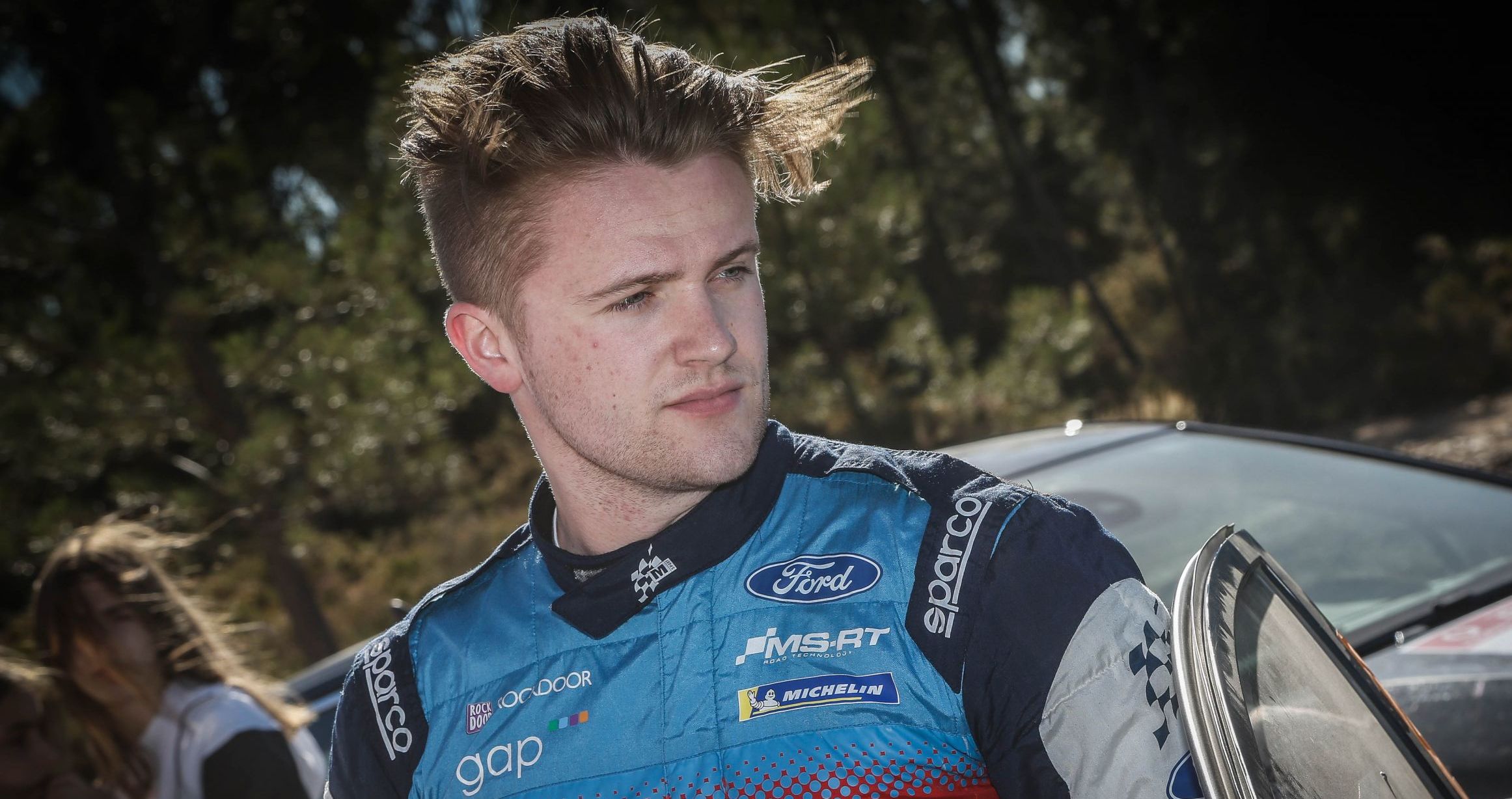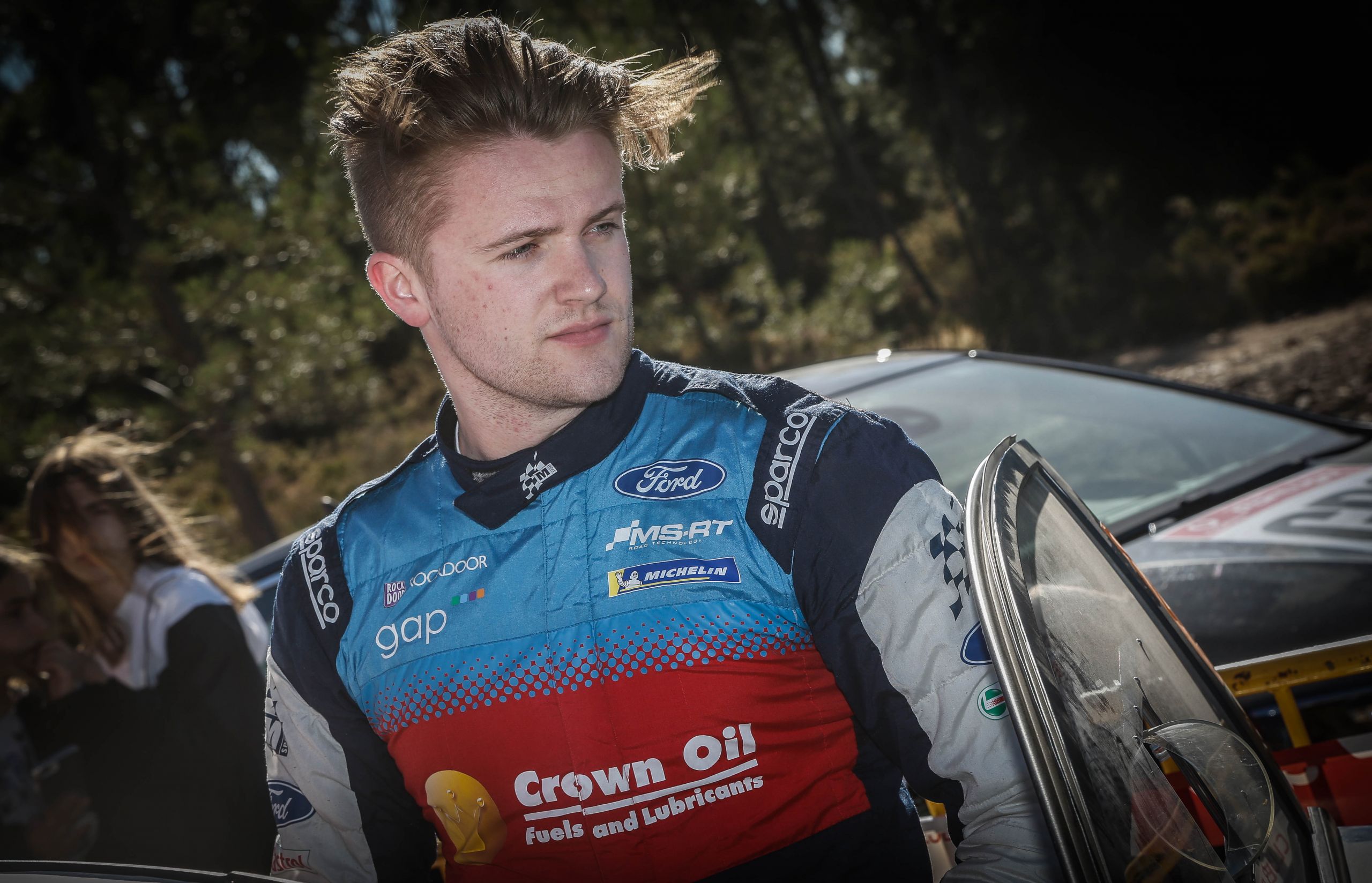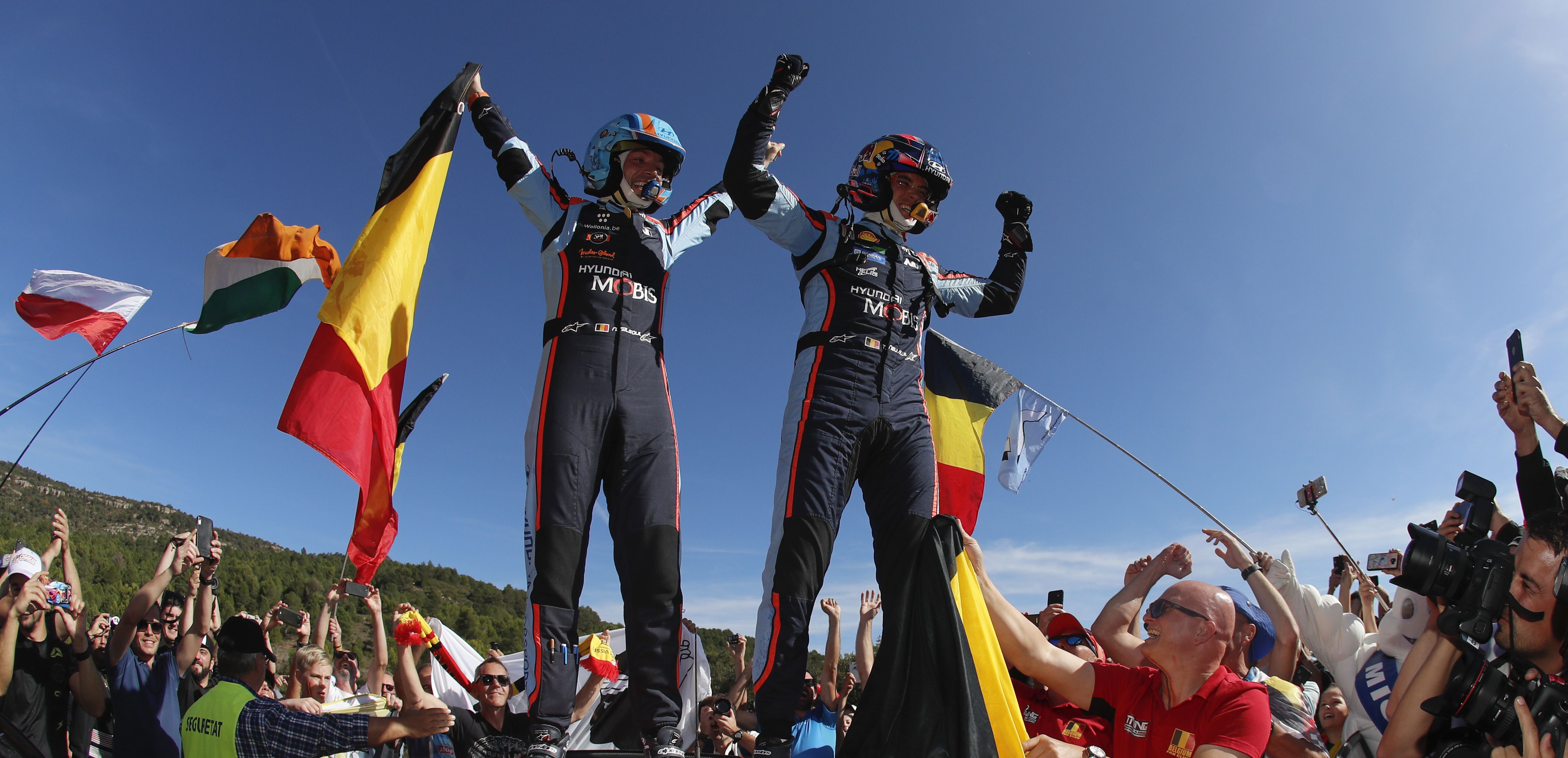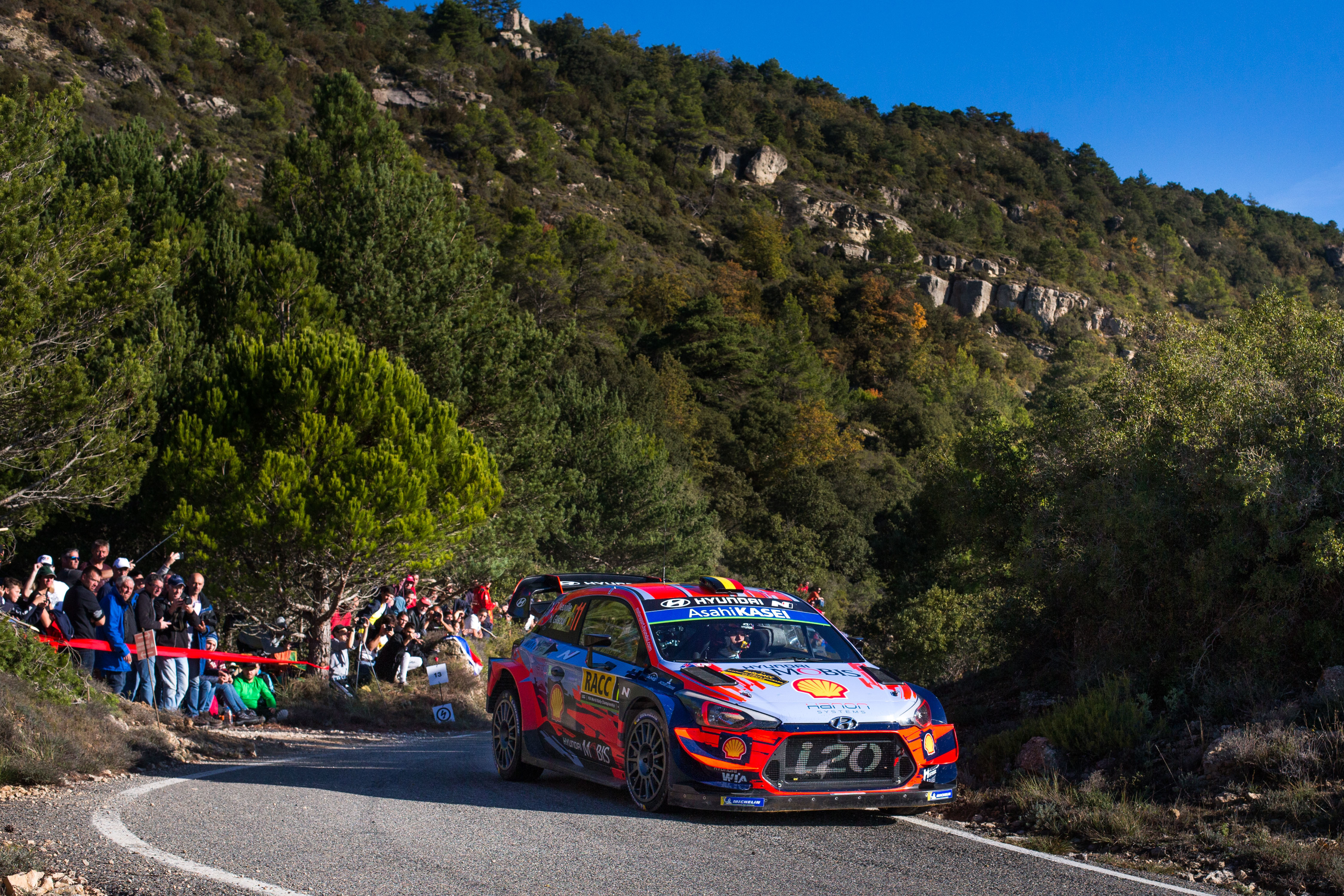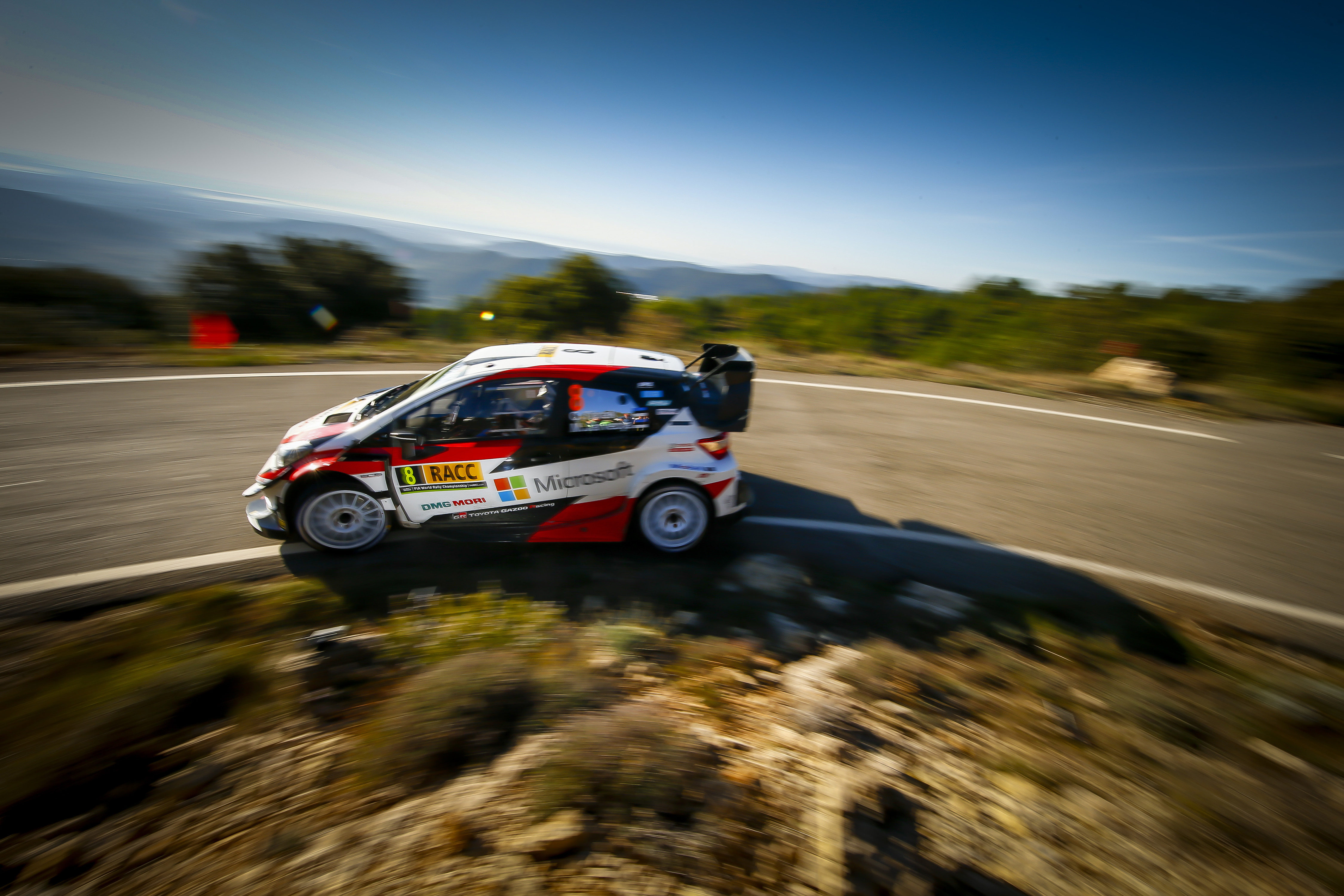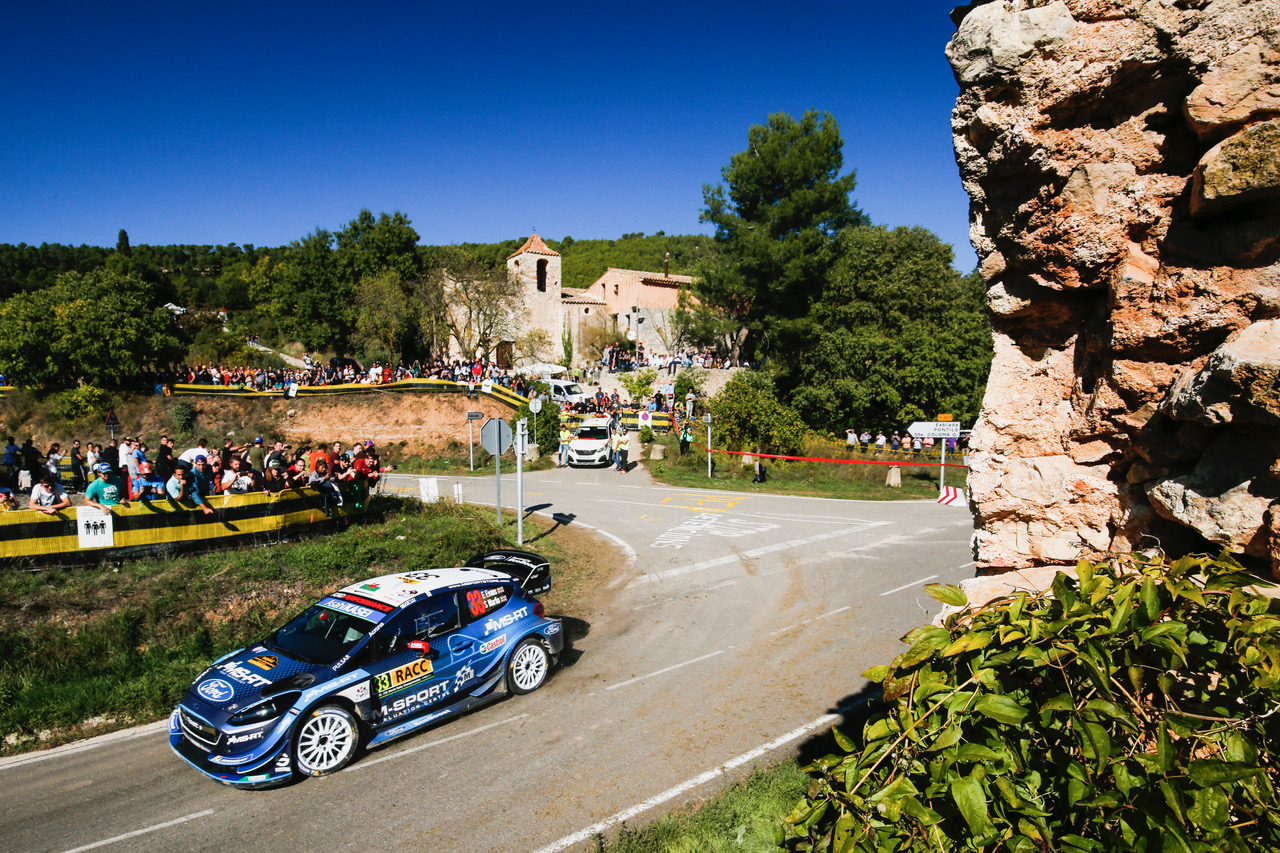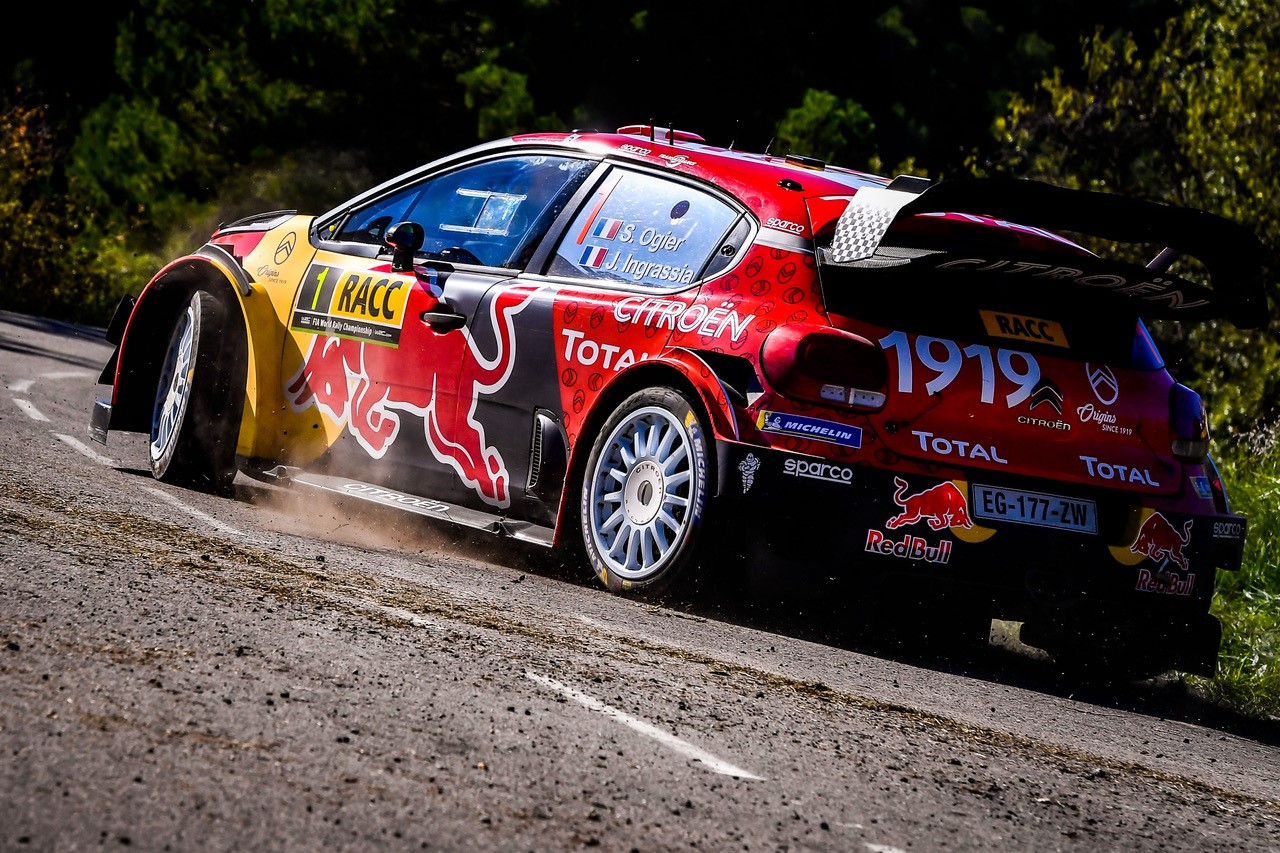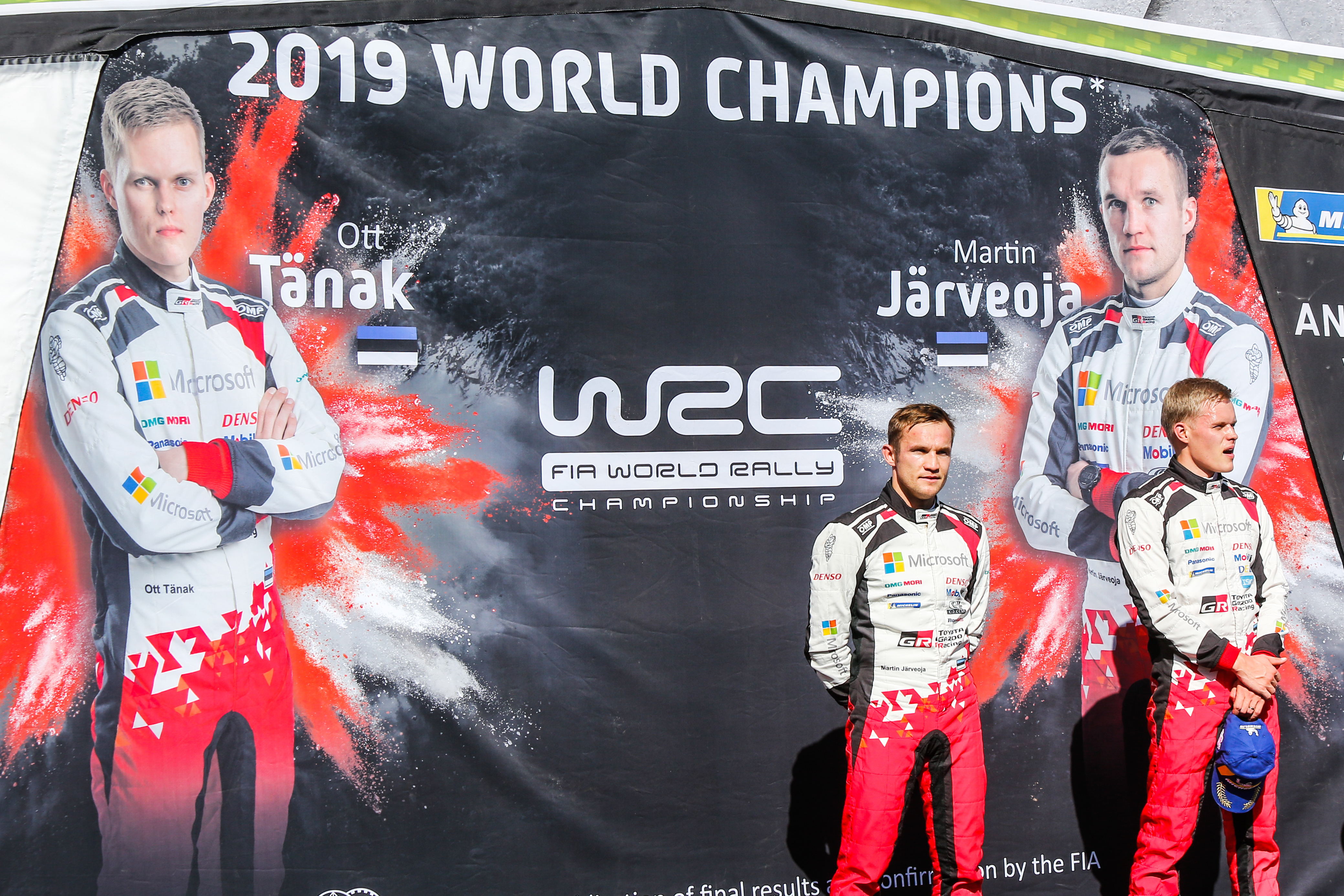Elfyn Evans and Scott Martin scored an impressive and dominant victory in last weekend’s Rally Sweden, and now lead the World Rally Championship for the first time. Here’s the story about it.
The action started on Friday with three stages. The running order was in championship order 1. Neuville 2. Ogier 3. Evans 4. Lappi 5. Rovanperä 6. Suninen 7. Katsuta 8. Tänak 9. Latvala 10. Breen
First up was SS2 Hof-Finnskog 1 – 21.26 km. Elfyn started brilliantly, winning the stage and taking a small one second lead from Ott and Kalle in third.
Into SS3 Finnskogen 1 – 20.68 km and the world champion hit back, winning the stage and reducing Elfyn’s lead to just two tenths of a second. Third quickest again was young Finn Kalle, who was starting very strongly as well. Top M-Sport driver was Esapekka Lappi held fifth overall having passed championship leader Thierry.
Elfyn won SS4 Nyckelvattnet 1 – 18.94 km from Kalle by 2.6 seconds with Seb Ogier third fastest. Kalle’s great pace in this stage lifted him ahead of Ott Tänak and into second place. Elfyn held a 7.9 second lead over his younger teammate, and was a solid 22 seconds ahead of Thierry who was in sixth.
Onto the short SS5 Torsby Sprint 1 – 2.80 km to end the day, and Ott won the stage, thus deposing Kalle back into third place. Elfyn held a good lead over Ott of 8.5 seconds, whilst Seb Ogier was in fourth place 3.5 seconds behind Kalle Rovanperä.
Classification after Day One
| 1 | E. Evans | S. Martin | Toyota Yaris WRC | 30:43.7 |
| 2 | O. Tänak | M. Järveoja | Hyundai i20 Coupe WRC | +8.5 |
| 3 | K. Rovanperä | J. Halttunen | Toyota Yaris WRC | +14.3 |
| 4 | S. Ogier | J. Ingrassia | Toyota Yaris WRC | +17.8 |
| 5 | E. Lappi | J. Ferm | Ford Fiesta WRC | +20.9 |
| 6 | T. Neuville | N. Gilsoul | Hyundai i20 Coupe WRC | +23.6 |
| 7 | C. Breen | P. Nagle | Hyundai i20 Coupe WRC | +24.2 |
| 8 | T. Suninen | J. Lehtinen | Ford Fiesta WRC | +31.4 |
| 9 | T. Katsuta | D. Barritt | Toyota Yaris WRC | +49.6 |
Driver thoughts at the end of Friday.
Toyota Gazoo Racing WRT
Elfyn Evans (1st)
“It’s been a pretty good day. The feeling in the car was immediately good this morning. It was quite difficult to know exactly how hard to push on the first stage: We had quite high grip, but it looked quite aggressive on the tyres. We tried to be quick but also relatively smooth and it seemed to work out pretty well. Now we need to try and do more of the same tomorrow. Nobody knows what the conditions will be like, so we have to adapt to whatever is put in front of us. I don’t think we’ll need to change much as everything worked very well today, but we’ll look over the data and try to find a few more seconds.”
Kalle Rovanperä (3rd)
“Today was nice. The conditions on the stages were better than everybody expected. There was more ice and snow and the tyres were lasting well. In the morning loop we were doing really well and we had good speed. There were a few mistakes here and there, but we were learning more about the car all the time. The last one didn’t go so well as I stalled the car and we lost a lot of time. So that was not so nice, but hopefully we can gain back the time tomorrow. Let’s will see if there is snowfall tonight, as that would make the conditions quite different.”
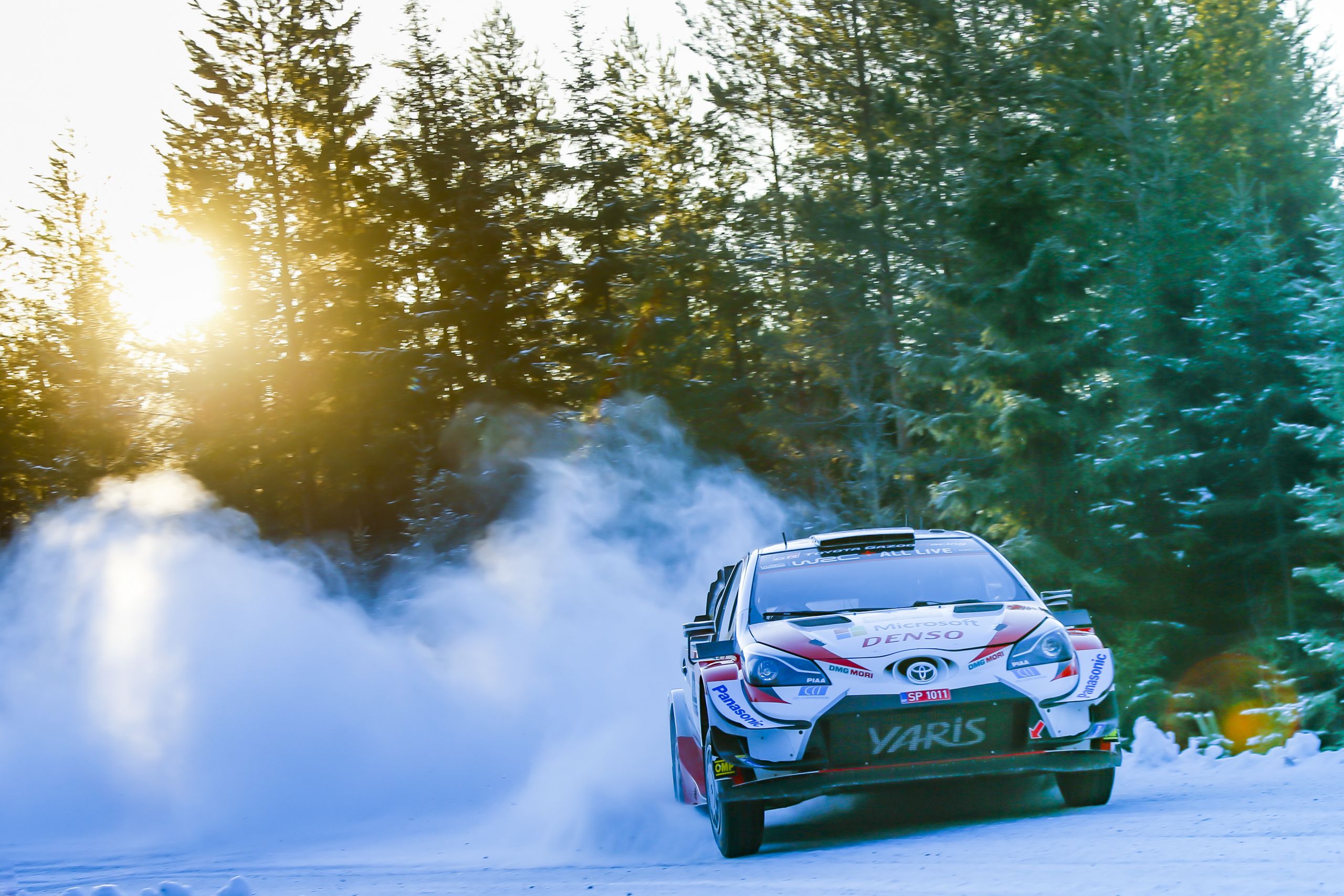
Sébastien Ogier (4th)
“The conditions were not that bad today; I think it was close to normal winter conditions. We could have good fun in some sections with good grip. It’s not been a bad day for us, but our team-mates have proven that we can go faster. It was not easy to start second on the road today, but that’s not the only reason why we have been slower. We need to be a little bit more committed in some places and maybe accept to take a bit more risk. The long-game is always important but we want to leave this event with as many points as possible. We’re going to try to make some little changes on the car for tomorrow and try to improve our pace if we can.”
Hyundai Motorsport
Ott Tänak (2nd)
“It’s been a good day. Conditions have been quite similar to the recce so we had an idea of what we would face. The start was not so bad. The first stage, especially on the gravel, was actually quite good. I felt nice in the car, it was in the icy places where I was not so confident. The final stage of the morning was a bit more demanding. With only one day of testing in the car, I was not really full of confidence but it’s coming step by step. I am happy to have made it to the end of this first day; we will now analyse all that we’ve learned from today and aim to speed up a bit tomorrow.”
Thierry Neuville (6th)
“It has been tricky to be first on the road today, but we’ve had a trouble-free run with no mistakes. I’m not happy with the overall classification but I am satisfied with what we’ve done in the car and with the speed. We couldn’t do much more. The first stage was quite consistent but the following two we knew would be trickier. This morning, the layer of ice was very thin in places and the gravel was coming out, which gives more grip to the cars behind. There were also a lot of cuts, where I was the first to discover. This rally is so short, it won’t be possible to catch up a lot of time, but we will fight hard and see what we can achieve tomorrow.”
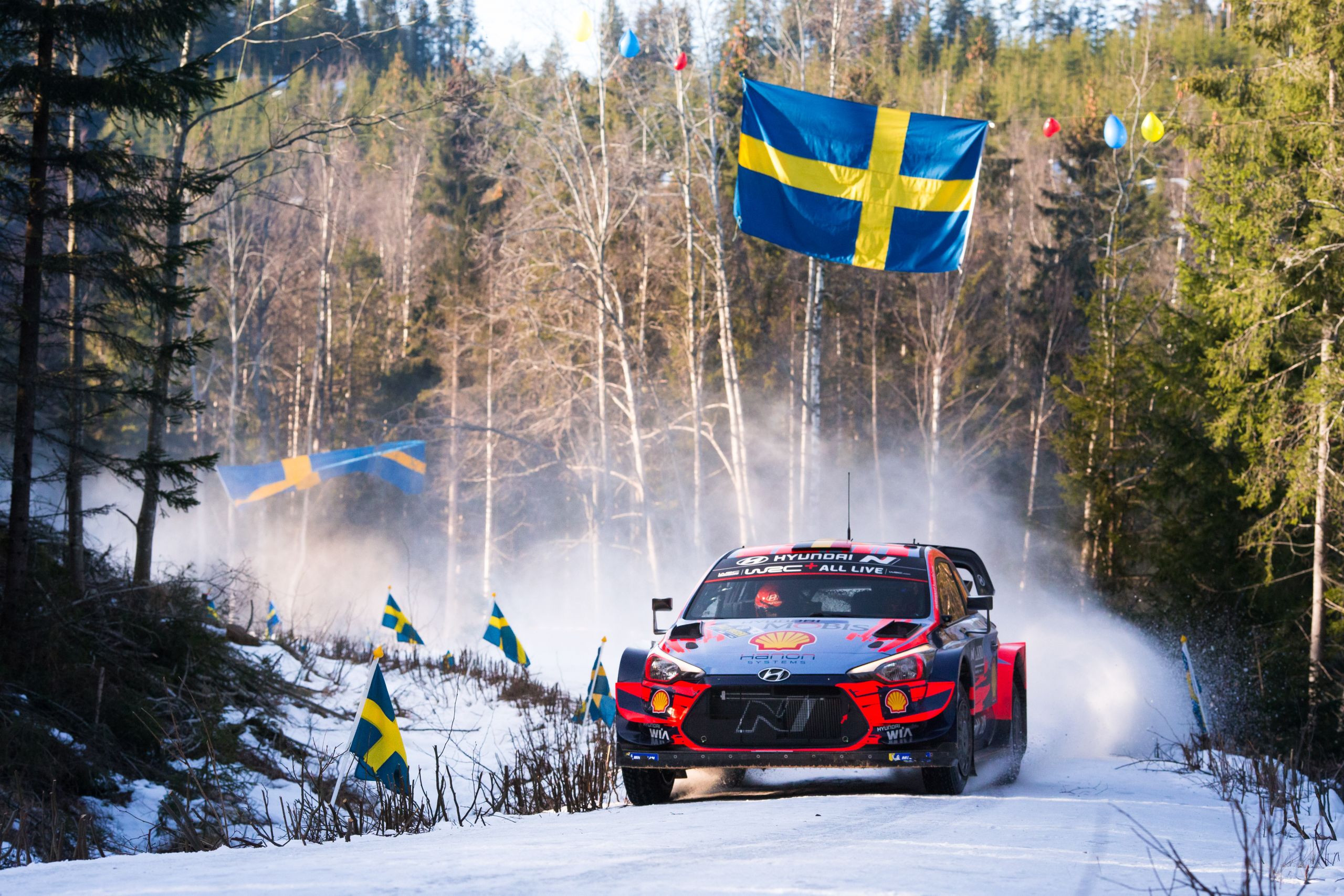
Round 02, Rally Sweden
13-16 February 2020
Thierry Neuville, Nicolas Gilsoul, Hyundai i20 Coupe WRC
Photographer: Helena El Mokni
Worldwide copyright: Hyundai Motorsport GmbH
Craig Breen (8th)
“It is great to be back in a WRC car; it’s been a while since Wales Rally GB. This is a different Rally Sweden to what we’ve seen in previous years, a much shorter event and missing a lot of the kilometres we should have been doing. As the day went on, I started to get more confidence. It’s always going to take a stage or two to get settled back in; fighting against guys who are in the car all the time, it’s hard to be flat out from the start. I really enjoyed it and I felt we were getting stronger with each kilometre. Tomorrow, it could be difficult to make much of a difference, but we’ll certainly try.”
M-Sport Ford WRT
Esapekka Lappi (5th)
“It’s been quite a consistent day for us. We can’t match the guys at the front which is a bit frustrating, but we are best of the rest and I’m happy with that. I’m really trying and was twice in the ditch already – losing a couple of seconds with that – but I feel that we can still improve. If we can make some small changes to the set-up then I think the pace can be better and tomorrow is a new day so for sure it’s not over yet. We’ll keep trying and keep pushing until the end.”
Teemu Suninen (7th)
“The conditions have been quite challenging today with a lot of gravel making it tricky to judge the grip. We didn’t have the pace we wanted in the fast sections and that’s something we know we need to work on. But the pace was a lot better in the slower sections and we’ll keep pushing tomorrow.”
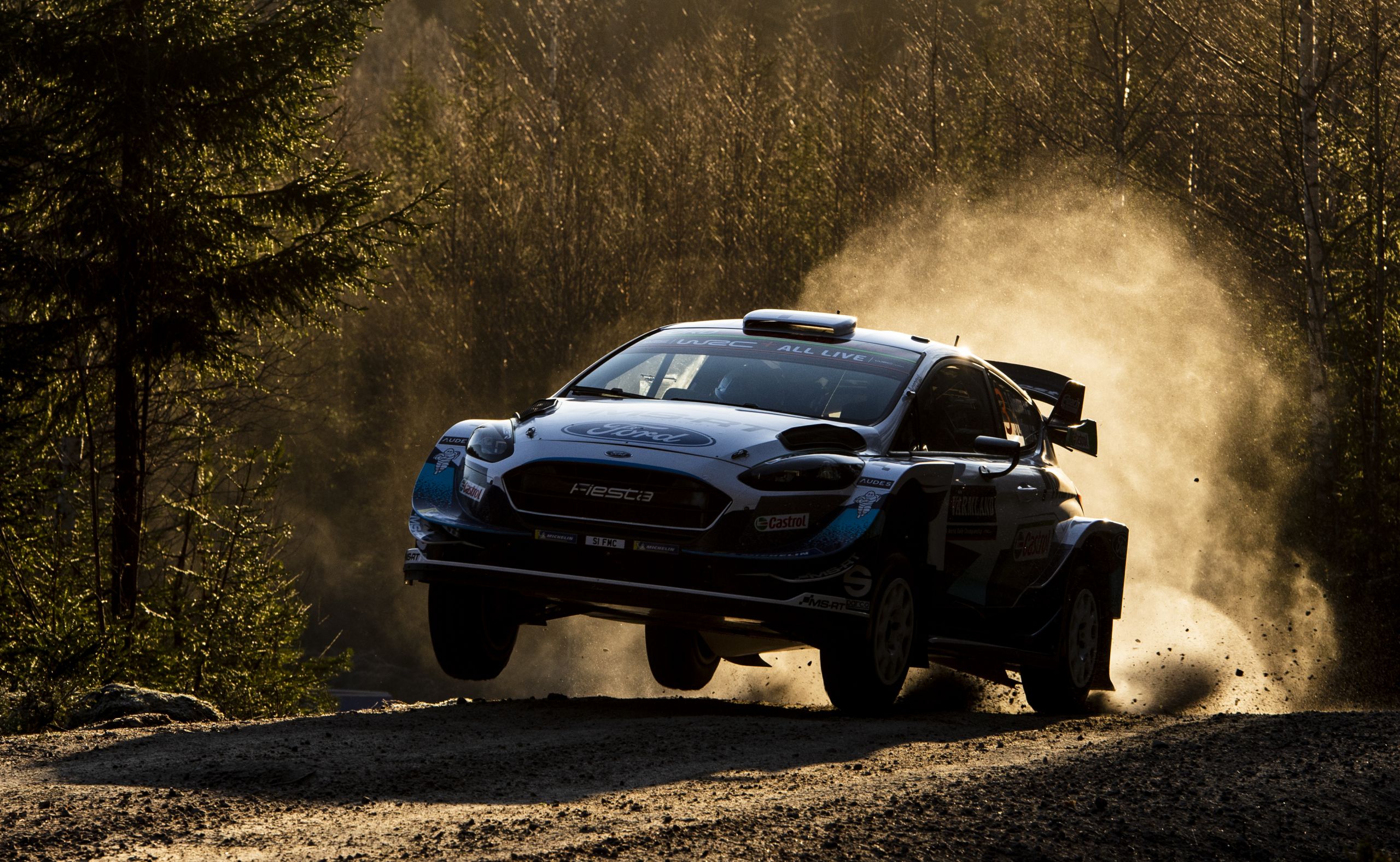
Saturday
This day action featured 68km’s over just four stages. The running order for day two was in reverse order – 1. Katsuta 2. Suninen 3. Breen 4. Neuville 5. Lappi 6. Ogier 7. Rovanperä 8. Tänak 9. Evans
Elfyn started the day well, winning SS6 Hof-Finnskog 2 – 21.26 km, with Ott Tänak once more second fastest and Seb setting the third best time. Kalle Rovanperä could only manage fifth fastest and the gap between him and shrinking to just one tenth of a second. Thierry was doing the best he could, given that he was opening the road, but was the best part of half a minute from the leader.
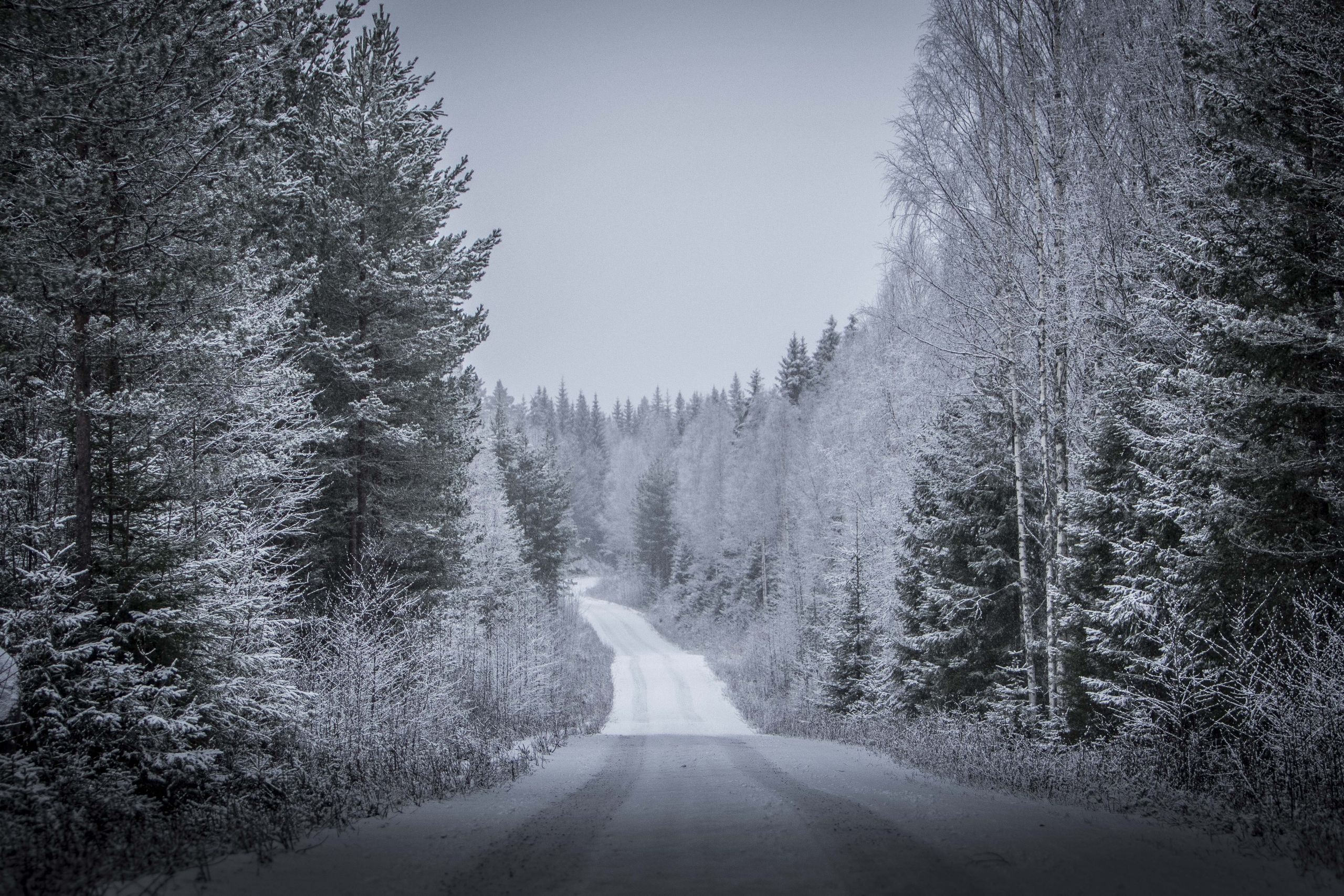
The great drive from the Welsh wizard continued into SS7 Finnskogen 2 – 20.68 km, which he also won, going 3.6 seconds faster than Ott once more and now the lead was a massive 15.3 seconds. Ogier also moved up the leaderboard, passing Kalle for third position after the Finn could only manage the seventh fastest time. The top M-Sport driver continued to be Esapekka Lappi, who was holding onto fifth position.
Well, Elfyn continued his dominance winning SS8 Nyckelvattnet 2 – 18.94 km as well, from Kalle Rovanperä, who’s great time moved him back ahead of Seb Ogier into third. Ott Tänak was now almost 17 seconds behind his former M-Sport teammate. The gap that Thierry had been reducing to Esapekka, now grew larger again, in their battle over fifth position, with the Belgian now over four seconds behind.
Just the short SS9 Torsby Sprint 2 – 2.80 km stage to round out the day and the top three were Thierry, Seb and Esapekka. Rally leader, Elfyn, was fourth quickest, and ahead of Ott as well giving him a 17.2 second lead over his closest challenger and the world champion.
Classification after Day Two
| 1 | E. Evans | S. Martin | Toyota Yaris WRC | 1:00:38.9 |
| 2 | O. Tänak | M. Järveoja | Hyundai i20 Coupe WRC | +17.2 |
| 3 | S. Ogier | J. Ingrassia | Toyota Yaris WRC | +28.8 |
| 4 | K. Rovanperä | J. Halttunen | Toyota Yaris WRC | +29.3 |
| 5 | E. Lappi | J. Ferm | Ford Fiesta WRC | +34.7 |
| 6 | T. Neuville | N. Gilsoul | Hyundai i20 Coupe WRC | +39.2 |
| 7 | C. Breen | P. Nagle | Hyundai i20 Coupe WRC | +49.7 |
| 8 | T. Suninen | J. Lehtinen | Ford Fiesta WRC | +1:14.8 |
| 9 | T. Katsuta | D. Barritt | Toyota Yaris WRC | +1:37.4 |
Toyota Gazoo Racing WRT
Elfyn Evans (1st)
“It has been another good day for us and we can be happy with what we’ve managed to do. I had a really good feeling in the car, I’ve been happy with the balance and the confidence it’s giving me. The first two stages this morning were really good. The third one was quite tricky, a bit softer with more loose ice and snow, and the last stage was quite rough but we got through it OK. Let’s see what we face tomorrow, as the conditions are a bit of an unknown. It could be very difficult with the warmer temperatures we have now, but hopefully we can find the same rhythm we have in the last two days. It’s a long stage and we just need to keep our head down and keep doing what we’ve been doing.”
Sébastien Ogier (3rd)
“It’s not been a bad day. We set some good times this morning. The third stage was not the best for me, but other than that I think we’ve done a good day. I’ve felt pretty good in the car. We’ve been playing around a bit with the setup and we’re learning with every kilometre. The Power Stage is obviously going to be important tomorrow. It’s still very tight with Kalle, and also the others guys are not far behind, so we cannot relax. We will have to push to the end, and the conditions could be quite tricky.”
Kalle Rovanperä (4th)
“This morning I had a good feeling but I was a bit too hard on the tyres and not managing them well, so we were losing time at the end of the stages as we were losing the studs. But we made some small setup changes on the car so that it was not understeering and not loading the front tyres so much, and then the third stage went well. The last stage was in a really rough condition and these were new conditions for me. It’s going to be really difficult for us tomorrow as we don’t have the same experience on this stage as the others, but I will try my best.”
Hyundai Motorsport
Ott Tänak (2nd)
“I can’t really say we’re happy, but we have been steadily making progress and getting valuable experience in the car. We’re still missing some feeling and confidence but that’s down to my lack of seat time. There are still a lot of things that are a bit fresh and some things to learn. We’re taking it step-by-step, improving all the time and understanding what we need to do to be on the pace. We’re not far off but it’s not as enjoyable to see such a gap. It has been a solid start for a short event, and I am sure the speed is there for the future; we just need to work on it.”

Round 02, Rally Sweden
13-16 February 2020
Ott Tanak, Martin Jarveoja, Hyundai i20 Coupe WRC
Photographer: Helena El Mokni
Worldwide copyright: Hyundai Motorsport GmbH
Thierry Neuville (6th)
“Performance-wise, I am quite satisfied with how things have gone; we have tried to do the best we could and optimise the situation we’re in. At the same time, we’ve had to be clever and avoid making silly mistakes. So far, it’s all fine but it’s also disappointing and frustrating not to be in the position we’d want to be. It’s a very short rally, so it is difficult to catch up lost time solely through driving. We are going to try and maintain our rhythm into tomorrow’s final stage and see what we can pick up for the championship.”
Craig Breen (7th)
“I’d summarise by saying the day has been sometimes good, sometimes bad. Obviously, it’s taking me a bit of time to get going. Again, on this morning’s opening stage, I don’t know why but I dropped too much time. The two other stages of the loop were really nice and I enjoyed myself. Compared to the people around us, we were quite competitive, but obviously there was a lot of cleaning, especially on the third one (SS7) with lots of fresh snow overnight. Thierry was running just behind us and we have been able to match his pace in some stages; we have to be happy with that. In a rally as specific like this you really have to be at one with everything. All things considered; I think we’re still doing a good job.”
M-Sport Ford WRT
Esapekka Lappi (5th)
“It’s been a very positive day. We made some changes to improve the set-up overnight and I was really pleased with the driving. This was a good step forward, and it’s something that we can use in the future too. I’m learning all the time the little things and small details that affect the feeling and allow you to push more. We’re still not quite up there with the top times, but we’re getting closer and closer. We just have the one stage tomorrow but nothing is over yet. With 4.5 seconds behind and 5.4 seconds ahead it will be a big push to the end for everyone!”
Teemu Suninen (8th)
“We didn’t have the best road position today, but like yesterday we’re still struggling to find the top pace. The first two stages weren’t too bad, but then in the third one I had a few big slides and took it carefully after that. Tomorrow we just have the Power Stage, so let’s see what the conditions are like and see what we can do in there.”
Sunday
Just one stage left then, after the first run of Likenäs was cancelled, giving us just the single run with counted as the power stage. Coming into the final day, Elfyn and Scott had a 17 second lead over Ott Tänak.
It was a first stage victory for the young Kalle Rovanperä in SS11 Likenäs 2 – 21.19 km who was almost four seconds faster than Thierry Neuville, with Seb Ogier third, Ott Tänak in fourth, Esapekka Lappi in fifth. Rally leader Elfyn Evans come through to finish the stage in sixth place, but crucially took a very special victory in his second event for Toyota Gazoo Racing WRT. It was the first for an all British crew as well.
It was a dominant drive from them both. They won by over twelve seconds from Ott Tänak and Kalle Rovanperä took a very impressive first podium, passing Seb Ogier in the final stage.
Final Overall Standings
| 1 | E. Evans | S. Martin | Toyota Yaris WRC | 1:11:43.1 |
| 2 | O. Tänak | M. Järveoja | Hyundai i20 Coupe WRC | +12.7 |
| 3 | K. Rovanperä | J. Halttunen | Toyota Yaris WRC | +20.2 |
| 4 | S. Ogier | J. Ingrassia | Toyota Yaris WRC | +23.6 |
| 5 | E. Lappi | J. Ferm | Ford Fiesta WRC | +32.4 |
| 6 | T. Neuville | N. Gilsoul | Hyundai i20 Coupe WRC | +33.8 |
| 7 | C. Breen | P. Nagle | Hyundai i20 Coupe WRC | +1:00.9 |
| 8 | T. Suninen | J. Lehtinen | Ford Fiesta WRC | +1:24.5 |
| 9 | T. Katsuta | D. Barritt | Toyota Yaris WRC | +1:59.6 |
| 10 | J. Huttunen | M. Lukka | Hyundai i20 R5 | +4:03.0 |
Toyota Gazoo Racing WRT
Elfyn Evans (1st)
“I feel really good to have my first win with Toyota Gazoo Racing in our second event together. I have to give a lot of credit to the team for not only giving me a great car but also giving me the support and help in testing for me to get the car to where I wanted it. The car is giving me great confidence, and in changeable conditions like we’ve had here, that’s really worth a lot. It has been very enjoyable to drive so far and hopefully we can carry this feeling onto gravel in the events to come. A big thanks to Scott too: he’s been very good since he’s been alongside me and I’m very happy to finally be with him for his first win too.”
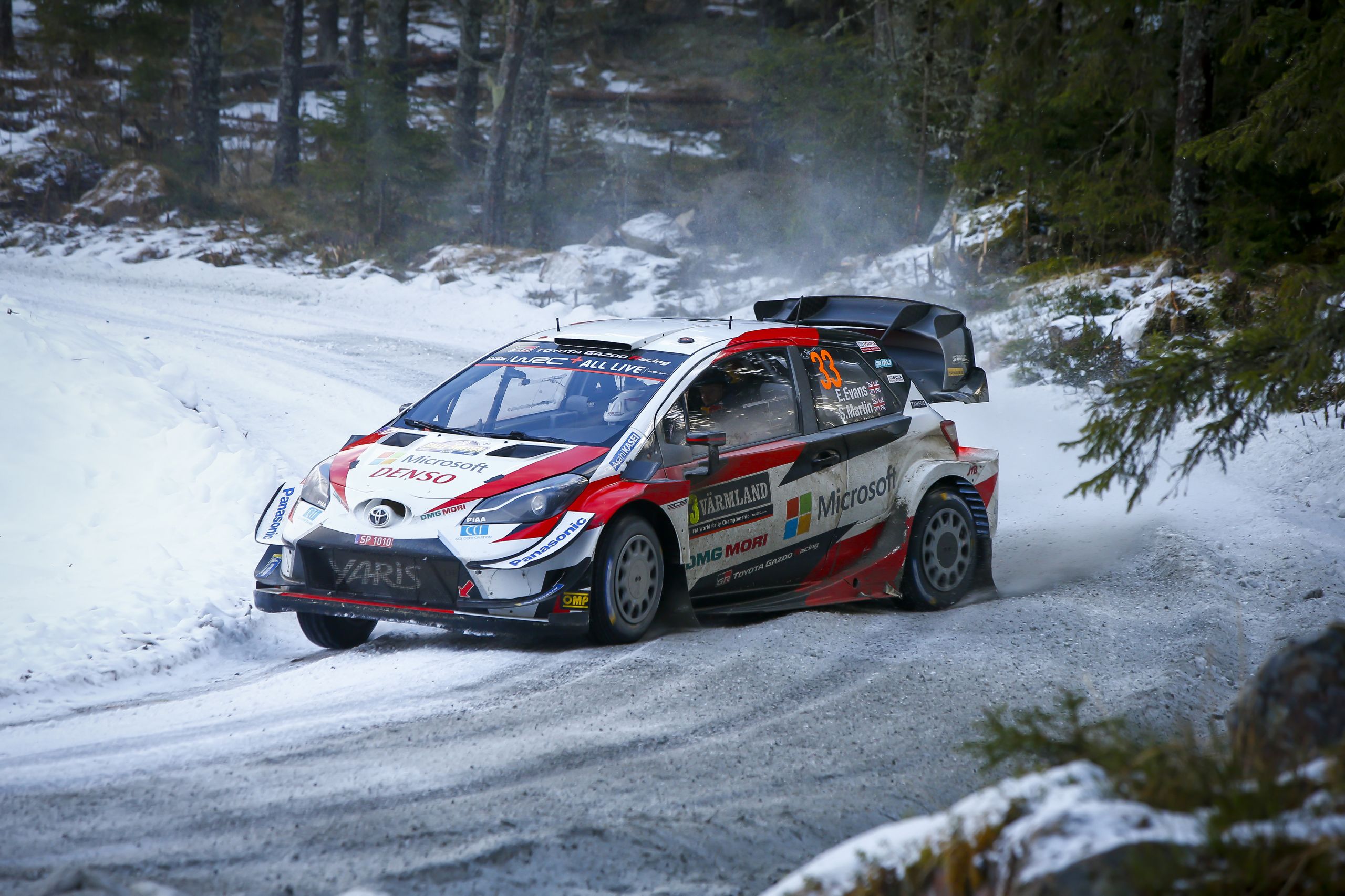
Kalle Rovanperä (3rd)
“I feel really good to be on the podium. It was a really demanding rally because it was shorter than usual and all the time you had to be flat-out. We were losing some time because of my mistakes but it was nice to get back on the podium today and also, to have five points from the Power Stage. It was a really good run, I gave it everything I have. It didn’t feel so good in the beginning because I was maybe a bit more careful and saving the tyres, but it paid off in the end as we were doing really fast split times and the final time was really good.”
Sébastien Ogier (4th)
“I cannot be unhappy about this weekend. I don’t really enjoy being fourth but it’s still some good points for the championship and it puts us in a good position ahead of Mexico. Kalle deserves this podium. He did a really great job the whole weekend, and he went for it in the Power Stage and he did a brilliant time. It was very difficult conditions, and when you’re thinking about the championship, it was hard to really go for it. Elfyn was driving fantastic this weekend and it’s a nice win for him and for the team. It’s always better to have these strong guys in your team rather than in the opposition: I think Toyota has a very strong line-up for this season. For us now we focus on the next one, where we will try to fight for the win.”
Hyundai Motorsport
Ott Tänak (2nd)
“I am pleased to take my first podium with the team, particularly considering the challenging conditions we’ve all experienced this weekend. There are certainly positives to take away. The car has shown it has the speed; we just need to learn more about it. After Monte-Carlo, it was important for us to complete the full event, to get some kilometres in the car, and to get some points on the board. We weren’t able to compete at the sharp end, but we are making good progress, improving all the time and finding more confidence in the car. Looking at things from that perspective, it has been a useful weekend.”
Thierry Neuville (6th)
“We had only one target today, which was to try and optimise the situation and push for points in the Power Stage. It wasn’t quite enough to set the fastest time, and the conditions were incredibly tricky, just like they have been the entire weekend. It has been a tough rally, but we couldn’t have done much more. There were a few stages where we lost a few seconds here or there; I don’t think it would have changed the end result.”
Craig Breen (7th)
“It has been a difficult weekend and, personally, I am not happy with my result. I have enjoyed being back in a WRC car immensely, don’t get me wrong, but it’s hard not to be up there fighting for podiums and wins. The weather and road order have been against us and it’s a pity we’ve had short loops. That’s made it hard to make much of an impression. Today we’ve seen completely different conditions again, with a lot of standing water, so there were no heroics; the priority was to bring the car home, which we did, and to support the team as best we could.”
M-Sport Ford WRT
Esapekka Lappi (5th)
“I need to be pleased with our performance this weekend. We’re not exactly where I wanted to be as I wanted to fight for the podium, but we’re not far away. We’re missing that last little bit, but it’s getting closer. We’ve made a good step forward – especially yesterday when the pace was really good – and that gives us some confidence going forward to Mexico. Everything is going well at the moment, so let’s see what we can do next.”
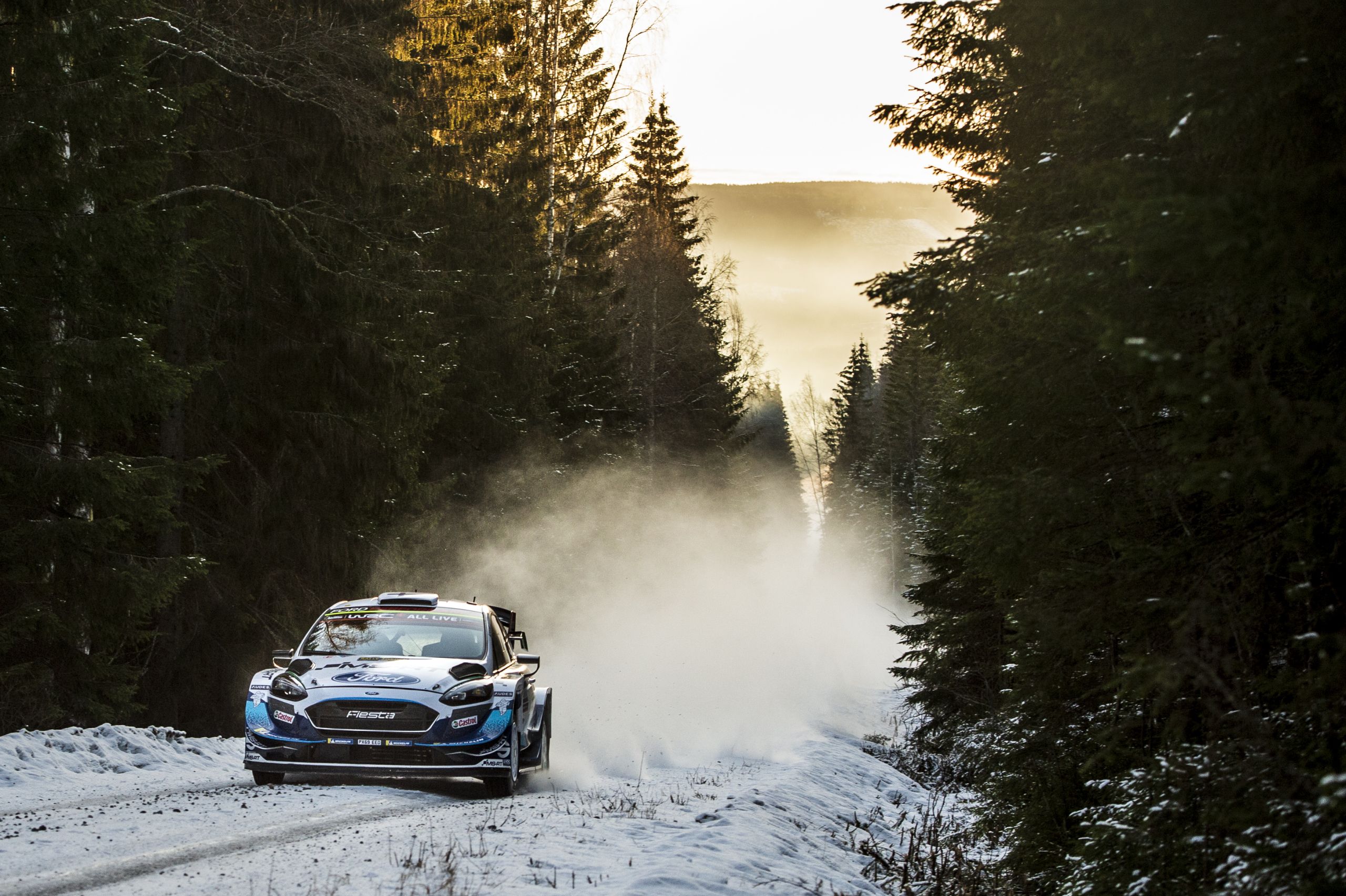
Teemu Suninen (8th)
“This hasn’t been a good rally for us. It all started with a big moment on Shakedown and then on Friday I was just taking it a bit too carefully in places. We lost a few seconds there and just couldn’t get the time back. Then on Saturday we had to open the road and that made it even more difficult. Now we just need to analyse this rally and look forward to being better on the next one.”
Summary
Well, that was a special weekend for Elfyn and Scott. Their first win together after coming so close last year in Corsica. It was a very dominant win as well, given that they never lost the lead at any point and always increased the lead that they had. It’s also given them the championship lead for the first time in their careers.
Ott Tänak and Martin Järveoja came back from a very big accident to show exactly why they are the world champions. Getting used to their new car and delivering top pace with two stage wins and a well-deserved second place.
Kalle Rovanperä and Jonne Halttunen scored a very impressive third place after taking their first stage win in their second event. It was a very good drive from the young Finn’s. It won’t be the first time that we see them on the podium this year.
Next event is Rally Mexico, from the 12th to the 15th of March.
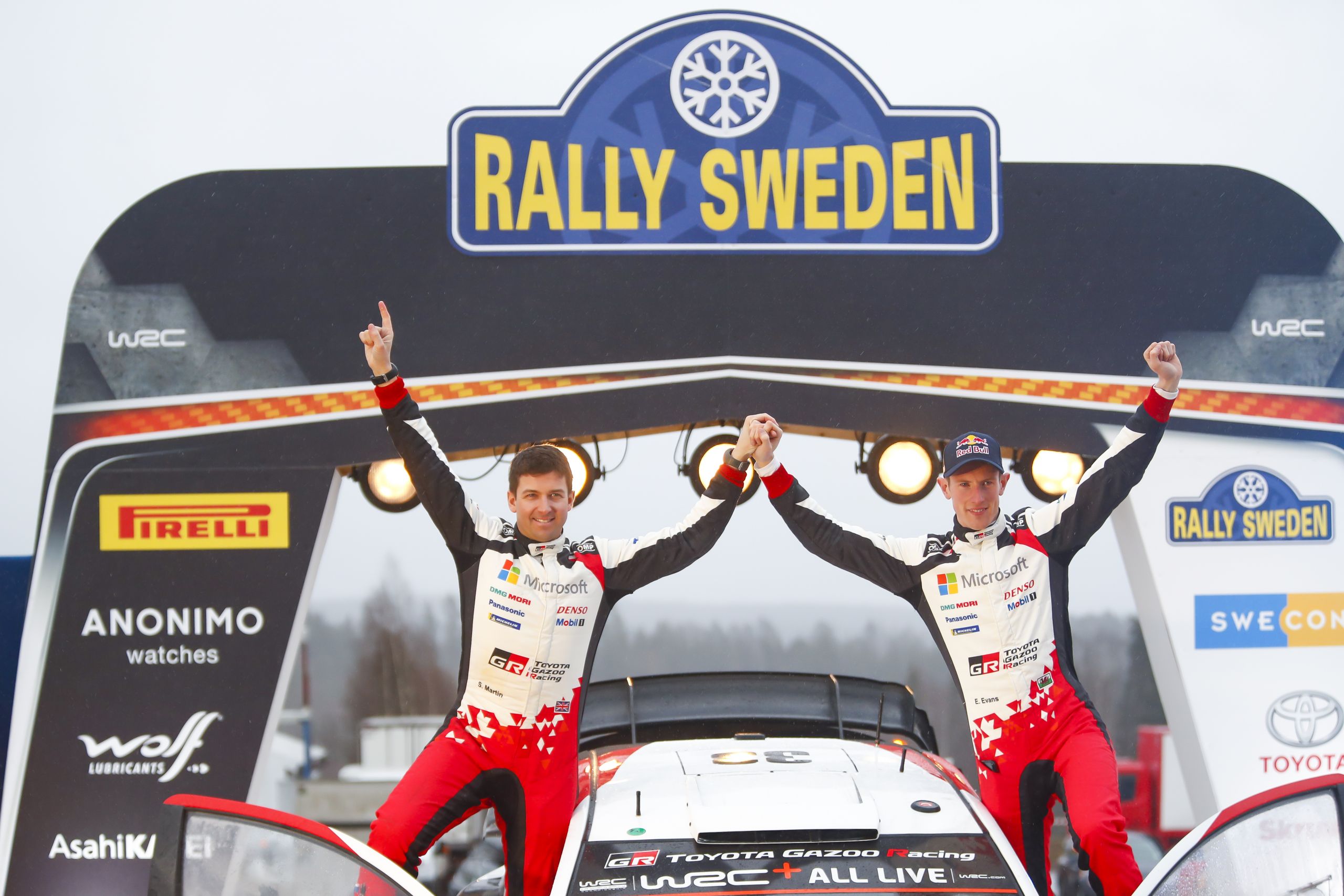
2020 FIA World Rally Championship for Drivers’ Standings
After round 2
| 1 | E. Evans | 42 |
| 2 | T. Neuville | 42 |
| 3 | S. Ogier | 37 |
| 4 | K. Rovanperä | 30 |
| 5 | E. Lappi | 24 |
| 6 | O. Tänak | 20 |
| 7 | T. Suninen | 11 |
| 8 | S. Loeb | 8 |
| 9 | T. Katsuta | 8 |
| 10 | C. Breen | 6 |
2020 FIA World Rally Championship for Manufacturers’ Standings
After round 2
| 1 | Toyota Gazoo Racing World Rally Team | 73 |
| 2 | Hyundai Shell Mobis World Rally Team | 63 |
| 3 | M-Sport Ford World Rally Team | 40 |
